

The Ultimate Construction Site Inspection Checklist: Ensuring Safety and Compliance
November 7, 2023

In construction, safety, quality and compliance are paramount. To ensure a successful construction project and the well-being of everyone involved, it’s essential to conduct thorough site inspections. And what better way to do it than with a comprehensive construction site inspection checklist? In this article, we will explore site inspections, offering you a detailed checklist, valuable insights, and best practices to keep your construction site safe and compliant.
The Importance of a Construction Site Inspection Checklist
Before we dive into the nitty-gritty details, let’s understand why having a construction site inspection checklist is worth your time and attention. Construction sites are dynamic environments, with numerous moving parts and potential hazards. Regular inspections not only help identify potential hazards but also ensure that all work is in compliance with safety regulations and project specifications.
A well-structured construction site inspection checklist serves as a tool for project managers, inspectors, and contractors to systematically assess various aspects of a construction site, from safety measures to quality control. It provides a standardized approach to inspections, making sure that nothing is overlooked and that everyone on the site is aware of their responsibilities regarding safety and compliance.
Now, let’s get into the specifics of creating a construction site inspection checklist that covers all the essential aspects of a construction project.
Creating Your Construction Site Inspection Checklist
1. checklist templates: your starting point.
The first step in creating an effective construction site inspection checklist is to find a suitable template. A well-designed template will save you time and ensure that you cover all the necessary areas during your inspections. There are various templates available online, some tailored to specific types of construction projects. Choose one that aligns with your project’s requirements.
In today’s digital age, many professionals employ specialized construction management software and tools to streamline the documentation process, making it easier to access, manage, and share important data.
Download and use our Free Site Inspection Checklist Template .
2. Safety Inspection: Protecting Lives and Limbs
Safety should always be the top priority on any construction site. Your checklist must include items related to personal protective equipment (PPE), electrical equipment safety, and hazard identification. Here are some key safety items to consider:
- Personal Protective Equipment (PPE): Ensure that all workers are wearing the appropriate PPE, including helmets, safety vests, gloves, and safety glasses.
- Electrical Equipment Safety: Inspect electrical equipment for any potential hazards or defects. Make sure it is in compliance with safety standards.
- Hazard Identification: Encourage all workers to report potential hazards immediately. Regularly inspect the site for hazards such as exposed wiring, slippery surfaces, and unsafe scaffolding.
3. Site Conditions: The Foundation of Success
The conditions of the construction site play a crucial role in the project’s overall success. A checklist for site conditions should cover the following:
- Cleanliness: Ensure that the site is clean and free of debris, which can pose tripping hazards.
- Access Roads: Check the condition of access roads leading to the site to prevent accidents and ensure smooth operations.
- Storage Areas: Verify that materials are stored safely and in designated areas to avoid clutter and potential hazards.
4. Compliance Matters: Meeting Regulatory Standards
Compliance with regulatory standards is non-negotiable in the construction industry. Your checklist should include items related to compliance with local regulations and project specifications. Here’s what to look for:
- OSHA Compliance: Ensure that the site adheres to the Occupational Safety and Health Administration (OSHA) standards, including proper signage and safety protocols.
- Project Specifications: Compare the ongoing work with the project’s plans and specifications to ensure alignment.
5. Quality Control: Delivering Excellence
Quality control is essential to delivering a successful construction project. Include the following items in your checklist to maintain high-quality standards:
- Regular Inspections: Schedule regular inspections to identify defects or deviations from the project’s quality standards.
- Stakeholder Involvement: Engage stakeholders in the inspection process to gather valuable input and ensure everyone’s expectations are met.
6. First Aid and Emergency Preparedness: Handling Unforeseen Situations
Even with the best safety measures in place, accidents can happen. Your checklist should cover first aid and emergency preparedness:
- First Aid Stations: Verify that first aid stations are accessible and well-stocked with necessary supplies.
- Emergency Response: Ensure that all workers are aware of the emergency response plan and evacuation routes.
7. Best Practices: Going the Extra Mile
In addition to regulatory compliance, consider implementing best practices that go above and beyond to enhance safety and efficiency on your construction site:
- Quality Management: Establish a robust quality management system to track progress and address any issues promptly.
- Identify Potential Hazards: Encourage workers to identify potential hazards and report them immediately. This proactive approach can prevent accidents before they occur.
8. Project Management: Coordination and Oversight
Effective project management is the backbone of a successful construction project. Include items related to project management in your checklist:
- Project Manager Involvement: Ensure that the project manager is actively involved in inspections and addressing any concerns.
- Communication: Maintain open communication among all stakeholders to keep everyone informed and aligned.
9. Documentation: Keeping a Record
Documenting your inspections and findings is crucial for accountability and record-keeping:
- Inspection Reports: Create detailed inspection reports that include findings, corrective actions, and follow-up plans.
- Photographic Evidence: Whenever possible, take photographs to document the conditions and issues observed during inspections.
10. Continuous Improvement: Learning from Inspections
The final item on your checklist should involve a commitment to continuous improvement:
- Feedback Loop: Establish a feedback loop to gather input from inspectors, workers, and project managers. Use this feedback to refine your inspection process and make it more effective.
- Training and Education: Invest in training and educational programs for your construction team based on the insights and lessons learned from inspections. Regularly update your team on safety protocols, new regulations, and best practices to ensure that everyone is well-informed and equipped to contribute to the continuous improvement of safety and quality on the construction site.
Conclusion: Ensuring Safety and Success
In the world of construction , a well-structured construction site inspection checklist is your key to ensuring safety, compliance, and the overall success of your projects. Regular inspections not only protect the well-being of everyone on the site but also help you deliver high-quality results that meet regulatory standards and stakeholder expectations.
Remember that safety and compliance should always be your top priorities, and a thorough checklist is your tool to achieve these goals. By covering all the essential aspects of construction site inspections, from safety measures to quality control and project management, you can embark on your construction projects with confidence, knowing that you are taking every necessary step to ensure success.
So, whether you’re a project manager, inspector, or contractor, start using a construction site inspection checklist today, and pave the way for a safer and more successful construction journey. Happy building!
Key Takeaways
- Utilize a checklist template as a starting point for your construction site inspection checklist.
- Prioritize safety with items related to personal protective equipment, electrical equipment safety, and hazard identification.
- Pay attention to site conditions, including cleanliness, access roads, and storage areas.
- Ensure compliance with OSHA standards and project specifications.
- Maintain high-quality standards through regular inspections and stakeholder involvement.
- Prepare for emergencies with first aid stations and an emergency response plan.
- Implement best practices, such as quality management and proactive hazard identification.
- Involve the project manager in inspections and maintain open communication.
- Document your inspections and findings, and use feedback for continuous improvement.
- Safety and compliance should always be top priorities on a construction site
Why is a construction site inspection checklist important?
A construction site inspection checklist is essential for systematically evaluating safety measures, ensuring regulatory compliance, and maintaining overall project quality. It serves as a comprehensive tool to identify potential hazards and monitor adherence to industry standards.
Who should use the Ultimate Construction Site Inspection Checklist?
The Ultimate Construction Site Inspection Checklist is designed for use by construction site supervisors, safety officers, project managers, inspectors, and any personnel responsible for overseeing construction activities.
What does the checklist cover?
The checklist covers a wide range of elements critical to construction site safety and compliance, including but not limited to, safety protocols, equipment conditions, hazard identification, and adherence to project specifications.
How can the checklist enhance safety on construction sites?
The checklist enhances safety by systematically assessing and addressing potential hazards, ensuring proper use of personal protective equipment (PPE), and verifying compliance with safety regulations, ultimately reducing the risk of accidents.
Is the checklist customizable for different construction projects?
Yes, the Ultimate Construction Site Inspection Checklist is designed to be customizable. Users can tailor the checklist to meet the specific requirements and nuances of different construction projects, ensuring its relevance across diverse scenarios.
How often should the Ultimate Construction Site Inspection Checklist be used?
The frequency of checklist usage depends on project dynamics and regulatory requirements. Typically, it is recommended to conduct inspections at regular intervals.
How can technology be integrated with the checklist for improved efficiency?
Technology can be integrated by using digital platforms or mobile apps to conduct inspections, capture real-time data, and streamline communication. This enhances the efficiency and accuracy of the inspection process.

Table of Contents
Share this article
Leave a reply cancel reply.
Your email address will not be published. Required fields are marked *
Save my name, email, and website in this browser for the next time I comment.
- Construction Site Inspections
8 Most Common Types of Construction Defects in Building Projects
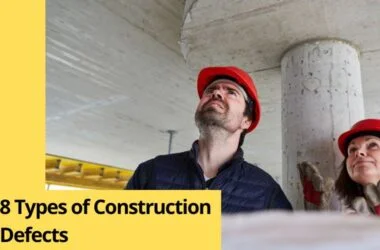
How to Conduct Construction Site Inspections? – An Actionable Guide (Bonus Checklist)
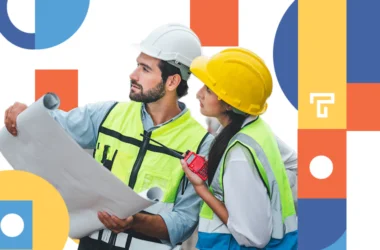
Commercial Building Inspections: A Comprehensive Guide
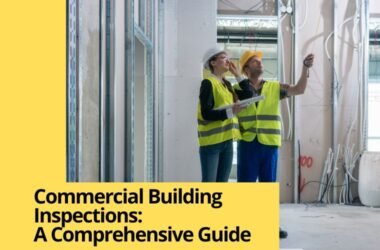
Site Inspection in 2023: 5 Trends Redefining the Inspection Landscape
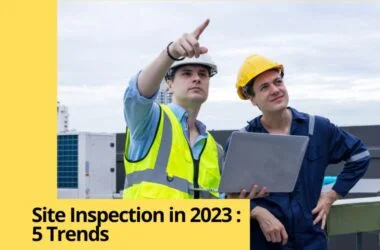
Receive the latest Site Insight - The Toco Blog.

6 Engineering Site Visit Checklist Tips to Know
An engineering site visit checklist is critical for most projects. It’s the reality check that keeps designs grounded in the real world.
Site visits are the ultimate way to get up close and personal with a project and the client. You’ll usually find yourself making site visits during these project stages:
- Project kickoff to grasp the work scope
- Design phase to fine-tune project details
- Construction phase to tackle problems
- Start-up post-construction to ensure everything’s running smoothly
To make the most of each site visit, follow my 6 engineering site visit checklist tips. I’ll focus on design phase visits, but these takeaways apply to all stages. Also, enjoy some rad photos from a hydroelectric facility I helped retrofit.
#1 Map out a solid plan of action for your site visit
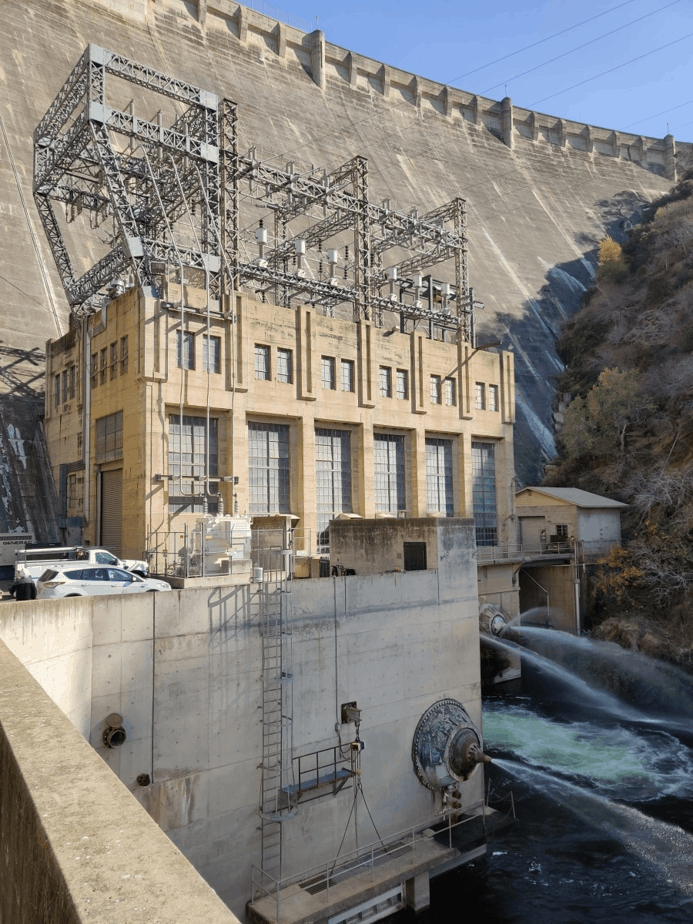
Preparation is the name of the game. Before I set foot on a site, I know exactly what I need to do there.
Take this example: say my project is to upgrade an existing substation for increased capacity. I’d first make a list of questions for the client and items to investigate at the site.
Client questions might include:
- Do you have existing as-built drawings and specs?
- How much new load are you forecasting?
- Can you break down the existing loads?
- Are there any issues I should know about?
- Is any existing equipment causing trouble?
- How much space is there to expand the substation?
- What’s your lead time for this project?
- How much downtime can you handle during the cutover phase?
- Are other upgrades needed (e.g., security, protective relaying)?
My site investigation checklist would include:
- Confirm equipment ratings
- Measure clearances
- Snap photos inside panels (e.g., control panels)
- Inspect existing equipment (e.g., switchgear, transformers)
- Measure space for new equipment
- Check transmission and distribution line connections
- Look for facility quirks or safety concerns
Keep in mind, I might tackle some tasks over the phone or through email before the visit. This way, the client can gear up for our powwow and avoid wasting precious time.
For instance, there have been times when I forgot to mention that I needed to inspect panel X. At the site, the client told me they couldn’t access it.
Come prepared to keep site visits efficient
When you visit a site, your client will most likely show you around. You won’t have all the time in the world to explore and brainstorm on the fly. Besides, you don’t want to come across as a clueless, unprepared engineer.
So, treat a site visit like any other high-stakes meeting. Some site visits can take months to arrange, so it’s best to know exactly what you want to achieve before you even set foot on the site. You don’t want to return from the visit kicking yourself, thinking,
“DAMN! I forgot to take photos of the control panel’s interior!”

Important Note: Don’t forget to ask your client about any site safety concerns. This is crucial for your safety and everyone around you.
I’ve been to sites with live 230,000-volt equipment and experienced treacherous drives to sites where I’ve nearly met my maker .
#2 Investigate the site thoroughly
Time to channel your inner Sherlock Holmes! Your blueprint for this detective work is the action plan you create in tip #1.
You’ll want to check if the client’s scope of work has any limitations, or if there are other issues your client forgot to mention. Sometimes, the work scope seems straightforward on paper, but once you’re on site, you uncover a whole slew of unexpected problems.
I like to compare it to our ambition to travel and colonize Mars. From Earth, the mission appears simple: send a couple of big rockets to Mars and create an artificial habitat that provides oxygen and protection from extreme cold, high radiation, and low atmospheric pressure.
However, the reality is mind-blowing. The challenges are enormous, and there’s a never-ending list of problems we haven’t even considered yet. Just take a look at some of the issues I’ve listed here when it comes to tunneling on Mars alone.
The point is, don’t just rely on what your client tells you. You’re the expert, so it’s up to you to investigate the site and determine what’s best for your client. After that, you can discuss your findings with them and fine-tune the work scope.
#3 Snap loads of pictures at the site

Nowadays, everyone has a high-end camera in their pocket with their smartphone. You can take endless top-quality photos on a whim. But, you need to know how to take great photos at a project site too.
Otherwise, when you return to your office, your photos might only cause more confusion. To avoid this, I’ll share four tips on how to take and manage pictures (and videos) effectively.
A) Organize and separate your photos on site
Picture yourself at a project site, snapping away photos, feeling like you’ve got everything under control. You think you’ll remember why and where each shot was taken. But let’s be real, once you’re back in your office, it’s a hot mess trying to figure out which photos belong where.
Imagine taking 50 pictures at location A and another 50 at locations B and C. To keep things organized, I whip out my trusty notepad, jot down the location or equipment, and snap a photo of it. Here are some examples of what I write:
- Inside building X looking at the west wall
- Inside the left-most cabinet of switchgear ‘Faulk’
- Investigating high voltage cabling of switchgear ‘Faulk’
With my digital divider in place, I only then start snapping field photos. Once I’m done, I move on to the next spot and repeat the process. Trust me, this technique is a lifesaver when you’re dealing with hundreds of photos.
B) Take photos in a patterned consistent manner
So, you want to capture the components in a 90-inch tall control panel? First, step back and get an overall shot of the panel. Then, zoom in and snap photos of the components from top to bottom.
This way, you can easily understand the mounting arrangement of the components in the zoomed-in photos. I’ve had moments where I didn’t take zoomed-out photos, and back in the office, it was a nightmare trying to follow the wiring of the components. Super frustrating!
C) Upload and organize your photos ASAP
Get those photos uploaded and organized right after your site visit, while everything’s still fresh in your head. If you missed any of the earlier photo tips, you’ll remember the details and make a note.
Next, turn each of your written notes from photo tip ‘A’ into separate folders. For example, if you took pictures at three different spots on your project site, your digital file organization would look something like this:
Main folder: Site Visit at Zeus Substation (DD/MM/YY)
Subfolders:
- Location #1
- Location #2
- Location #3
Lastly, give each of your photos a detailed name. Invest a little time now, and you’ll save yourself from future headaches.
D) Take a lot of photos
Back in the day, film was expensive, so you had to be stingy with your shots. But now, there’s no reason not to go photo-crazy! Plus, you can review the quality of each photo right there on the spot.
So go ahead, take loads of photos and even videos. They’ll only help you back at the office. I say, if a photo has even a 1% chance of being useful, take the shot! You never know when those seemingly pointless pics might save the day.
#4 Bring all your necessary supplies to the site
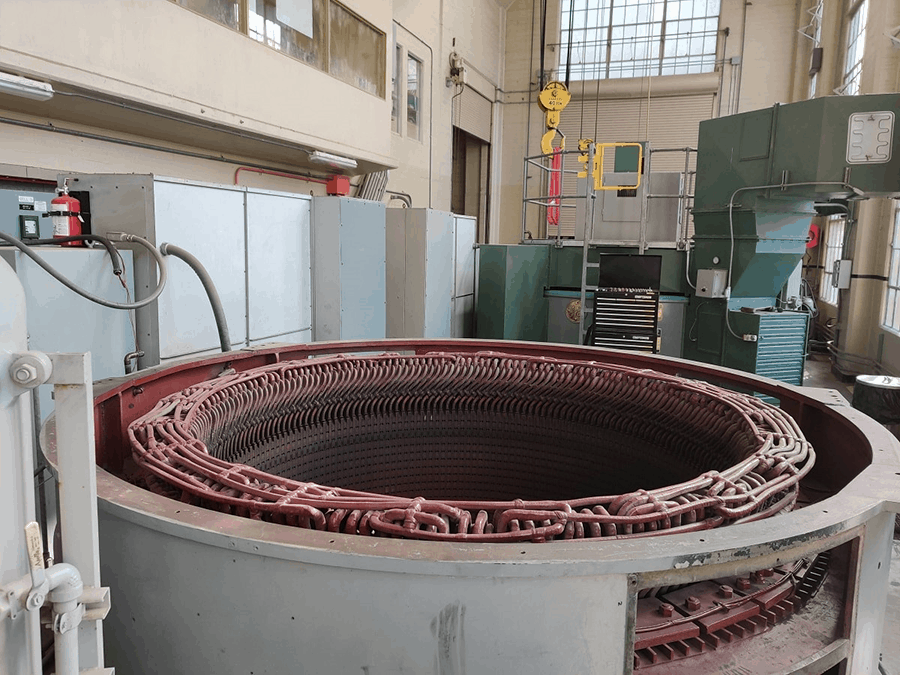
Depending on your field of engineering, you’ll have a bunch of supplies to bring along. My list is always pretty lengthy . Don’t expect your client to hook you up with supplies, especially since they’re paying you!
So pack for the unexpected and bring all your gear just in case. You never know when you’ll need to measure a piece of equipment or pry open a panel. If you’re not prepared, you’ll miss out on valuable data.
#5 Forge a strong connection with your client during site visits
Nothing beats getting to know your client face-to-face, right? Sure, digital communication is a breeze these days, with everyone clutching their trusty smartphones.
But, let’s be real – in-person interactions still reign supreme. That’s why I think site visits are the perfect chance to bond with your client.
Without a face to match the name, you’re just another entry on their spreadsheet. Genuine human connections, on the other hand, pave the way for deeper relationships. This usually leads to smoother project execution. Plus, your future requests are less likely to be left hanging.
#6 Show up on time for your site visit
This one’s a no-brainer, but punctuality is key. Actually, aim to be 10 to 15 minutes early. You don’t want to make a lousy impression by keeping your client waiting.
Go the extra mile to pinpoint the precise site location in advance. This might mean asking your client for map snapshots and off-the-beaten-path directions. After all, some engineering project sites can be in the boonies, with no physical address that your GPS can easily locate.
I’d recommend downloading the site map on your phone, just in case you lose signal. Alternatively, use a non-internet-dependent GPS device.
And if you’re running late, give your client a heads-up with a phone call. At the end of the day, professionalism is paramount.
Engineering site visit checklist wrap up
Site visits play a huge role in engineering projects. The better you tackle site visits, the more successful projects you’ll spearhead.
My advice? Learn about site visits specific to your engineering field . Pick the brains of seasoned engineers to discover what to look for during site visits. Then, tweak your engineering site visit checklist as needed. You might uncover something unique to your line of work that I didn’t cover.
What do you find the most important about engineering project site visits? What’s on your engineering site visit checklist?
SUBSCRIBE TO ENGINEER CALCS NEWSLETTER
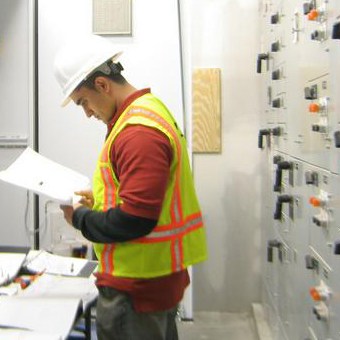
Author Bio: Koosha started Engineer Calcs in 2019 to help people better understand the engineering and construction industry, and to discuss various science and engineering-related topics to make people think. He has been working in the engineering and tech industry in California for well over 15 years now and is a licensed professional electrical engineer, and also has various entrepreneurial pursuits.
Koosha has an extensive background in the design and specification of electrical systems with areas of expertise including power generation, transmission, distribution, instrumentation and controls, and water distribution and pumping as well as alternative energy (wind, solar, geothermal, and storage).
Koosha is most interested in engineering innovations, the cosmos, sports, fitness, and our history and future.
Leave a Comment Cancel reply
Save my name, email, and website in this browser for the next time I comment.
- Skip to content
- What jobs are right for me?
- Browse all job roles
- How to apply for a job
- What is a construction worker?
- What roles are available?
- How do I apply?
- Different levels of apprenticeships
- A guide to your apprenticeship wage
- Construction Apprenticeships
- Work experience
- Construction traineeships
- Construction courses
- Apply to become a Go Construct STEM Ambassador
- Frequently asked questions
- Request an Ambassador
- Free courses
- Stories of people in construction
- What's happening in construction?
- Construction and disability
- Construction and ethnic diversity
- Construction and LGBTQ+
- Construction and refugees
- How you can promote diversity
- The changing culture of construction
- Joining the UK construction industry
- Women in construction
- Construction and gender
- What is construction?
- How does construction work?
- Construction Industry
- Key Stage 2
- Key Stage 3
- Key Stage 4
- Key Stage 5
- Career presentations
- Careers videos
- Construction phase plan
- Construction programme
- Construction sites
- Modern methods of construction
- Interactive Video Resources
- Ultimate Quiz
- CPD Resources
- Interactive Construction Site
- Why do an apprenticeship
- What is an apprenticeship
- How long is an apprenticeship
- Apprenticeship wages
- Apprenticeship levels
- How to find an apprenticeship
- How to apply for an apprenticeship
- How to write a CV for an apprenticeship
- How to write a cover letter for an apprenticeship
- What to expect from an apprenticeship interview
- Educational resources
Guide to Construction Site Visits
Resource Names:
- A Guide to Organising a Construction Site Visit
- A Site Visit Workbook
- Site Visit Arrangement Sheet (editable)
Resource Descriptor:
These resources provide a range of information, advice and guidance including a workbook, checklists, FAQ to support employers hosting a construction site visit and those who are intending to visit a construction site.
Resource Aims:
The information and advice in the guide aims to help both parties in the planning stages and on the day of the site visit to ensure that it is both meaningful and successful.
Any parties who may be organising a construction site visit including:
- Education & Learning Providers
- Jobcentre Plus
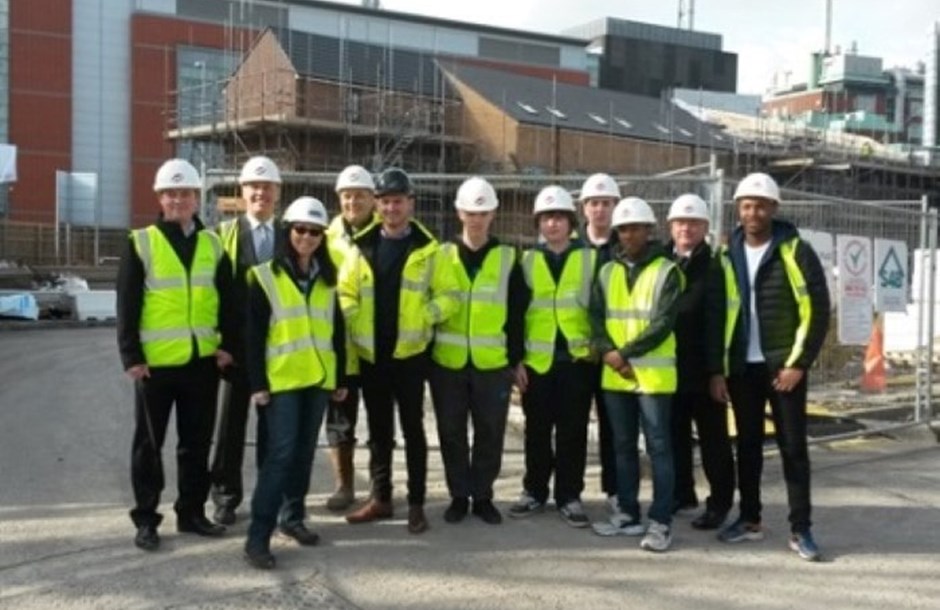
Further Information:
Please see the Resource Cover sheet which provides an overview of the resource.
Download all documents for Guide to Construction Site Visits

- Site Inspection Checklist
Introduction to Site Inspection Checklist:
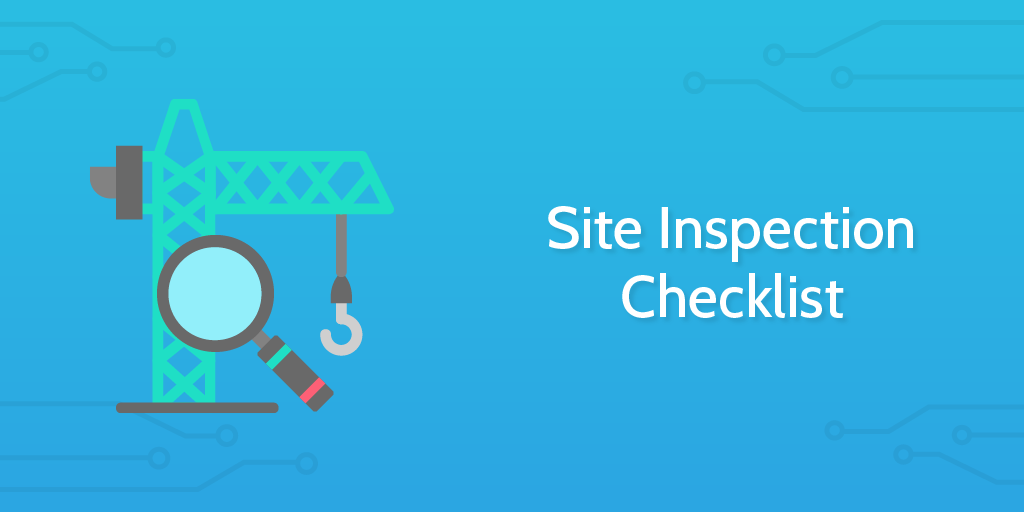
This site inspection checklist is geared toward the formal inspection of construction sites to provide the high standards set across the industry are being met .
You can run this site inspection checklist every time you, as an inspector, visit a construction site to assess adherence to safety and operating standards.
Each task within this checklist is geared to a different segment of items to be checked. Within each task are further details to be checked and monitored.
We've provided simple Yes/No checklist options for each item which needs to be checked along with upload fields to provide evidence of what you're checking . You can upload photos or files in these fields depending on what you're looking to measure.
If you add this to your Process Street account then you can edit the template to suit your specific needs, adding form fields and upload fields wherever you please.
One of the most important aspects of running inspections is performing them on a regular basis and accurately reporting and documenting how they have been run and who by . In Process Street, this is done automatically every time you run a checklist.
In the template overview tab, you will see a table with drag and drop columns which records the data for each checklist as a separate spreadsheet row . If you need to compile all your site inspections to present them then you can export the data from the overview tab as a CSV file. This will contain a record of the checklists you have run along with all the results of the checklists.
Site inspections are a vital part of making sure industry rules and regulations are adhered to. Employ this checklist to ease the process and raise standards .
Record site details
Use the form fields below to record the details of the site
Record project details
Record the details of the project in the form fields below.
Monitor site control practices
Site control practices are representative of a site's overall management . These methods of reporting and tracking the overall important factors impacting on the site should be being adhered to.
Detailed records should be being kept and organization should be evident. Use the form fields below to upload evidence of performance on the various tasks presented .
Check site facilities
Review site tidiness and accessibility, assess the use of personal safety equipment.
Adherence to safety regulations and best practices should be evident from the management to the staff on the ground . A failure to transmit these priorities appropriately presents a worry for other areas of safety and adherence.
Use the form fields below to gather evidence of either positive or negative findings on-site.
Review first aid and fire safety strategy and adherence
- 1 Fire extinguishers are available
- 2 Fire extinguishers are up to date - within last 12 months
- 3 There are a sufficient number of fire extinguishers
Inspect cranes and hoisting equipment
Assess all compressed air equipment.
Appropriate training on equipment, appropriate storage of equipment, and appropriate maintenance of equipment are all vital elements in creating and keeping a secure and safe on-site environment.
Use the form fields below to report site behavior.
Check all excavations
Monitor welding and gas cutting operations, perform standard review of electrical equipment.
There were 51,000 electrical fires in the US in 2015 and they contributed directly to the deaths of 500 people.
The job of an inspector is to root out these problems before they occur. If the electrical equipment on-site is not up to standard then that presents a red flag for the work the contractors are doing on the project.
Use the form fields below to record the electrical situation on-site.
Review chemical policy and adherence
Inspect site approach to tools, examine all site scaffolding.
Working at heights is a dangerous part of working in the construction industry .
The construction industry is the most dangerous industry in which to work in America.
As an inspector, it is vital you assess the behaviors and strategies in place which present risks to safety.
Use the form fields below to record information about site scaffolding.
Check ladder use and practices
Search for fall hazards, provide any further overall notes.
Now that the inspection has been completed, use this space below to record any further notes you believe are pertinent.
Congratulations on completing the inspection.

- https://www.sitesafe.org.nz/globalassets/products-and-services/sssp-v2/interactive/sssp-inspection-checklist-interactive.pdf
- https://safety.unsw.edu.au/hs812-construction-site-inspection-checklist
- http://c.ymcdn.com/sites/escabc.com/resource/collection/C400912B-6648-4376-A9B7-33FE411943C0/Construction%20Site%20Inspections.pdf
- http://www.epa.ohio.gov/portals/35/storm/cgp_ins1.pdf
- http://www.cpwr.com/sites/default/files/publications/ConstructionSafetyChecklist_English.pdf
Related templates:
- Solar Panel Installation
- Roof Installation Process
- Pool Construction Process
- Electrical Inspection Checklist
- Construction Proposal Template
- Construction Progress Report
Take control of your workflows today.
More templates like this.

- 1-855-DO-FORMS
- Request A Demo

- Mobile Forms
- doForms Marketplace
- Sync & Save
- Data Collection
- Geotab Integration
- Government & Education
- Mobile Forms For Business
- Small to Mid Sized Businesses
- Enterprise Business
- Global Businesses
- International Organizations
- Video Library
- Sample doForms
- DIY Form Builder
- ROI Calculator
- Customer Service
- Try It Free
- Request Demo
Construction Site Safety Inspection [Template + FAQs]
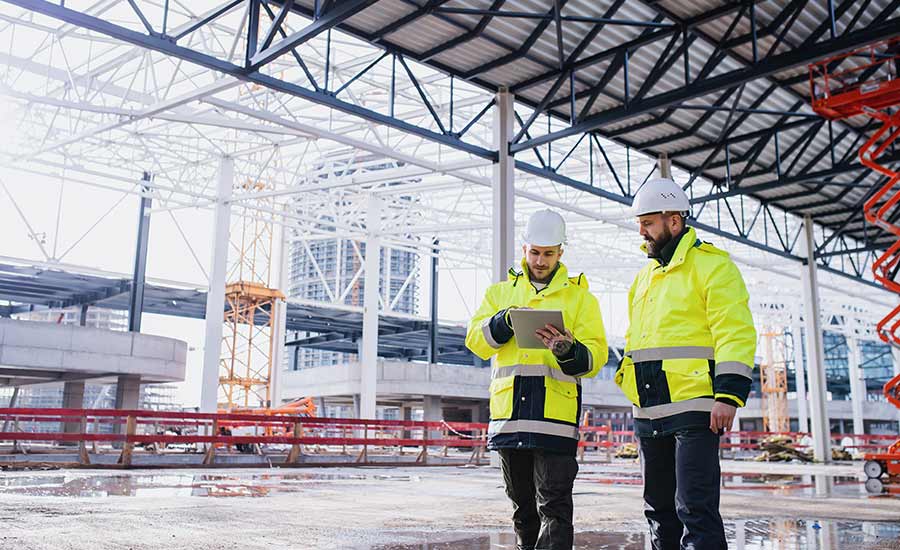
The fast-paced world of construction poses numerous challenges for business owners, from mitigating risks associated with hazardous conditions to fostering a culture of safety among workers.
Regular inspections that use detailed checklists can serve as a crucial tool in addressing these challenges.
Find out why it is important to have a construction site safety inspection checklist and what to include in it. Plus, we have created a free template that you can customize to reflect the safety requirements of your construction site.
Ready to create a construction site safety inspection checklist? Try doForms For Free!
What Is A Construction Site Safety Inspection?
A construction site safety inspection thoroughly examines the site to identify potential hazards, unsafe conditions or practices that might cause accidents or harm to workers or visitors.
A construction site safety inspection assesses various aspects of the site, including work areas, equipment and machinery, fall protection systems, personal protective equipment (PPE) and handling of hazardous materials.
The purpose of a site safety inspection is to ensure compliance with safety regulations, prevent accidents and promote a safe working environment.
Check out how a safety inspection differs from a safety audit .
The Importance Of Construction Site Safety Inspection Checklists
Integrating checklists into safety inspections provides a systematic and structured approach for a detailed assessment.
Checklists provide a clear framework to guide inspectors through key safety checks, making the inspection more efficient and helping identify hazards early, leading to a safer construction site.
- Standardization: Safety inspection checklists provide a standardized framework for evaluating construction site safety across different projects and locations.
- Improved safety: Systematical identification and documentation of potential hazards and unsafe conditions helps address hazards proactively and minimize the risk of accidents, injuries and fatalities.
- Legal compliance: Checklists help construction companies stay compliant with safety regulations and standards.
- Training tool: Checklists can serve as a training tool for new inspectors. They help them understand safety protocols and procedures and ensure that inspections are conducted effectively.
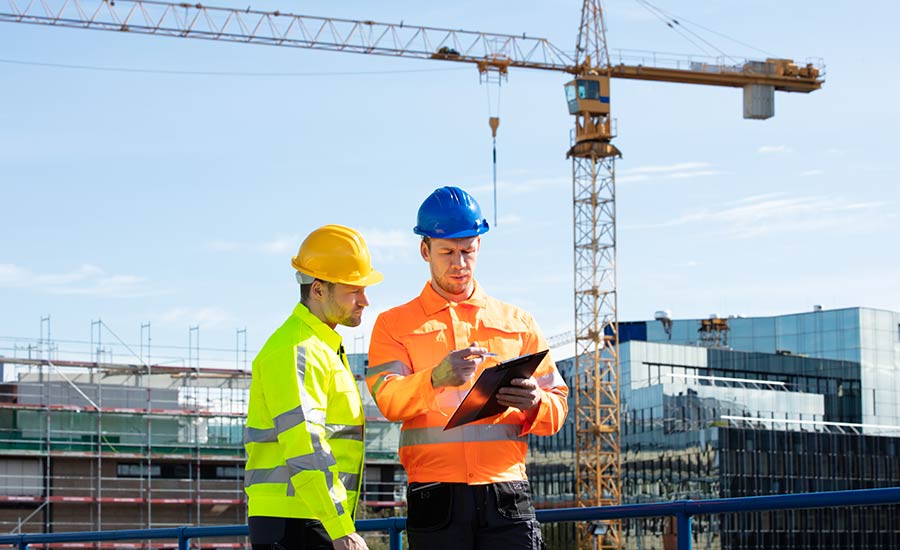
Construction site safety inspection checklists improve safety, ensure legal compliance and serve as a training tool
What To Include In A Construction Site Safety Inspection Checklist
Construction site safety inspection checklists have several essential sections to assess safety and find areas that need improvement.
General Information
This section includes the inspector’s name, the location of the construction site and the date of the inspection. These details ensure accountability and traceability.
Working Environment
This section focuses on assessing the overall conditions of the construction site to maintain a safe working environment for all workers. Inspectors evaluate factors such as signage, lighting, ventilation and weather conditions.
By addressing these aspects, the checklist helps identify potential hazards and ensures proper measures are taken to reduce risks and promote safety.
Personal Protective Equipment
This section emphasizes the importance of PPE in preventing injuries and promoting worker safety on the construction site.
Inspectors check if workers have access to and are using head protection, body protection and fall protection equipment to keep them safe against workplace hazards.
Equipment & Machinery
This section evaluates the safety and functionality of the equipment and machinery on the construction site.
Inspectors review records, assess operational safety, check the condition of equipment components, verify proper use and training of operators and ensure safe storage and handling practices.
Examining these aspects helps identify potential equipment and machinery hazards to prevent accidents and injuries.
Emergency Equipment
This section assesses the accessibility of emergency resources and procedures on the construction site, aiming to respond promptly to emergencies and minimize the impact of accidents or incidents.
Inspectors verify the accessibility of first aid stations, fire extinguishers, emergency response plans, alarm systems and personal emergency devices.

Construction site safety inspection checklists include information about working environment, PPE equipment and machinery
Construction Site Safety Inspection Checklist [Free Template]
To help you promote a safer working environment for everyone involved in your construction project, we have compiled a construction site safety inspection checklist.
You can adjust, expand or modify it as needed so that it meets the specific requirements and conditions of your construction site.
- Include the date of the inspection.
- Include the inspector’s name.
- Include the location of the construction site.
- Check if debris, spills and clutter in walkways and work areas are properly managed to prevent slips, trips and falls.
- Verify the presence of safety signs, labels and warnings, including hazard warnings, emergency evacuation routes and site-specific instructions.
- Assess indoor and outdoor lighting on the construction site to ensure sufficient visibility for safe work activities — especially during early morning, late evening or nighttime work.
- Evaluate ventilation systems to ensure adequate airflow and proper circulation of fresh air — especially in enclosed spaces or areas where hazardous fumes or dust may accumulate.
- Consider weather-related factors such as temperature and wind speed and assess their potential impact on worker safety. For example, you may need to provide shelter or reschedule work activities in case of severe weather conditions.
- Check if all workers wear hard hats or helmets to protect themselves against head injuries from falling objects or overhead hazards.
- Verify that workers use safety glasses, goggles or face shields to stay safe against flying debris, dust and chemicals.
- Confirm the availability and use of respiratory protection , such as dust masks and respirators in dusty or fume-filled environments.
- Check if workers wear suitable gloves for their specific tasks — for example, when handling sharp objects, chemicals or rough surfaces.
- Check if workers wear adequate footwear, such as steel-toed boots or shoes with slip-resistant soles, to protect against foot injuries, punctures or slips.
- Verify the use of high-visibility clothing or reflective vests to ensure protection from moving equipment or vehicles.
- Confirm the proper use of fall protection equipment , such as safety harnesses, self-retracting lifelines (SRLs) and shock-absorbing lanyards.
- Ensure equipment and machinery have up-to-date inspection and maintenance records.
- Verify that equipment and machinery are operated safely, including start-up/shut-down procedures, guarding mechanisms and emergency stop controls.
- Check equipment components for wear, damage or malfunction.
- Confirm that operators are trained and authorized to use specific equipment.
- Assess the storage and handling of equipment, tools and hazardous materials.
- Ensure first aid kits, eye wash stations and emergency medical supplies are available and accessible.
- Verify that fire extinguishers are properly maintained and within easy reach.
- Review emergency response plans, including evacuation routes, assembly points and communication protocols.
- Practice various emergency scenarios.
- Test if the alarm systems are functioning.
- Ensure workers have access to personal emergency devices, such as whistles, radios or smartphones to communicate and signal in emergency situations.
Create Custom Construction Site Safety Inspection Checklists With doForms
As a cutting-edge mobile forms solution, doForms revolutionizes safety management in the construction industry by empowering businesses to create customized checklists and forms tailored to their specific needs.
Our intuitive platform allows you to effortlessly design digital forms that align with regulatory requirements and project specifications. Use the samples from our extensive library or build your own checklist from scratch with our mobile form builder .
doForms allows real-time data capturing from any location on any mobile device, which gives you instant access to inspection reports and insights. This, in turn, allows you to make proactive decisions and mitigate potential risks.
With doForms, you can include photos and videos in your inspection documents, enhancing clarity by providing visual context for safety hazards or compliance issues encountered during site assessments.
The flexibility of doForms allows you to adapt your inspection documents on-the-fly, accommodating changes in project scope, safety regulations or emerging safety concerns.
In addition to construction site safety inspection checklists, you can create other types of construction forms , such as:
- Construction daily reports
- Construction site preparation checklists
- Heavy equipment inspection checklists
Use doForms to improve your efficiency and promote a safer working environment on your construction site.
Ready to say goodbye to paper forms? Try doForms For Free!
FAQs About Digital Construction Site Safety Inspection Checklists
If you are still hesitant about implementing digital construction site safety inspection checklists in your business, the FAQs below can help you make a decision.
How can a digital construction site safety inspection checklist improve efficiency?
Digital inspection checklists eliminate the need for manual data entry and paper storage, which saves time and minimizes the risk of errors. In addition, digital checklists enable real-time data capture which provides immediate insights into safety conditions and allows prompt corrective actions.
What features should I look for in a digital construction site safety inspection checklist app?
Look for features such as customizable checklist templates, offline functionality, photo and video capture capabilities, digital signatures and cloud storage. doForms offers all these to make your site safety inspection easy and efficient.
Can I customize digital inspection checklists to my specific project requirements?
Yes, doForms’ digital inspection checklists are highly customizable. They help you create tailored checklists based on your project specifications, regulatory requirements and industry standards. You can include specific items, tasks and criteria relevant to your construction site and safety protocols.
Ready to create custom checklists? Try doForms For Free!
Related Articles
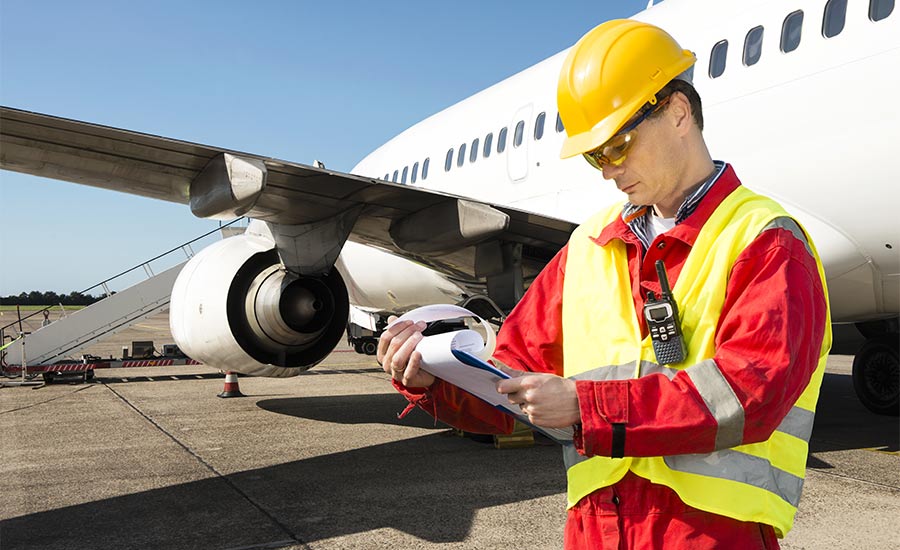
Preflight Checklist: Benefits, FAQs & A Free Template

Inventory Accuracy: Techniques & Tools To Ensure Count Precision

ITAR Compliance Checklist: A Detailed Guide
Are you ready to make your business more efficient, do you want to work with doforms.
Subscribe to our newsletter for free tips, tricks, and walkthroughs on how to streamline your business with mobile forms.

Free Site Analysis Checklist
Every design project begins with site analysis … start it with confidence for free!
Site Visit Analysis and Report: How to conduct and evaluate your first architecture site visit
- Updated: January 2, 2024

Here we will cover everything you need to know about of how to approach your first site visit analysis for a new project, what to do when physically there, and how to eventuate and summarize the information you collect.
However before visiting for the first time we highly recommend that you carry out desktop study beforehand, as this will provide an important initial understanding of the site and generate far better results and more refined questions once there.
The desktop study will also help to identify the important items of equipment that you will need to take with you to make your trip as successful as possible. …these are mentioned below but may include a:
- Site map (very important)
- Tape measure
- Laser distance meter
…more essential architects items here

Conducting an architecture site visit analysis
A site visit analysis is a comprehensive report that summarizes the findings of a physical inspection of a potential development site. It includes information on the site’s physical characteristics, location, surrounding area, demographic information, environmental impact, zoning regulations, traffic flow, and recommendations for development.
The report synthesizes all gathered information to provide a comprehensive understanding of the site and its potential.
What to look for?
Once there, there are a whole number of important areas and items that need to be studied and recorded, some of which would have already been identified during your desktop study, but as a starting point we’ve produced the below list of all the key areas:
We suggest that you take these with you and tick them off as they are found, so not to miss anything.
- Entrance and access points (both pedestrian and vehicle)
- Security (gates, surveillance)
- Travelling to the site (road types and suitability, safety, public transport)
- Boundary treatment (fencing, vegetation, land form, water)
- Extent of boundary (does it match the survey/OS map)
- Circulation (existing travel routes within the site)
- Noise levels (quiet and loud areas)
- Services (electric, gas, water, sewage)
- Existing buildings (condition? Relevant? Protected?)
- Existing landscape features (condition? Relevant? Protected?)
- Neighbouring buildings (local vernacular, protected?)
- Views in and out of the site (areas to screen off and areas to draw attention to)
- Tree’s and vegetation (protected and rare species)
- Ecology (any areas likely to be home to protected species)
- Orientation (sun and wind paths)
- Light levels (areas in direct sunlight, shaded areas, dappled light)
- Accessibility (disability access)
- Surrounding context (historical, heritage, conservation area, SSSI, AONB)
- Existing materials in and around the site
- Topography (site levels)
- Flood level (is it likely to flood)
- Soil and ground conditions (types and suitability)
- Existing legal agreements (where are the rights of way, covenants)
- Hazards (Electricity lines, Drainage, Telephone lines, Sub-stations)
We provide a site analysis checklist here covering all of the above that’s free to download.

Where to start
You want to begin documenting your visit as soon as you arrive, as the approach and entrance to your site are just as important as the site itself. If you’re desktop study didn’t highlight the possible routes and methods of transport to and from the site, then this needs to be recorded also.
Documenting your first impressions is vitally important, ask yourself; what do you see as you enter the site? what do you hear? what do you feel? (…what senses are the first to be triggered), you will only get one chance to do this properly and so you need to make it count!
…and don’t forget to include the location of the elements you record, when noting it down on your site map or survey. By the end of your visit, you should barley be able to read whats under all your notes …write down everything!
Moving on from first impressions, you should plan to walk around the site as least twice (as a minimum) to ensure that nothing is missed, so leave enough time to make a least two loops, noting down and photographing everything that you feel is relevant, no matter how small.
…there’s nothing worse than getting back to the studio and realizing you forgot to document something.
We like to use the check list supplied above and:
- Firstly walk around the site whilst annotating a site plan
- Secondly with a camera …photographing everything
- and thirdly with both …just in case something has been missed
This way we can focus on one task at a time, helping to ensure we gather everything we need.
In terms of a camera, and depending on your budget we suggest looking one these three options (but a phone is just as good):
- Sony DSCW800 Digital Compact Camera
- Sony DSCWX350 Digital Compact Camera
- Canon EOS 1300D DSLR Camera
It can be difficult to identify certain elements, and some may only be noticeable from a professional survey, such as underground services and precise spot levels. But approximations of such locations and heights are a good start and can serve as a reminder for further investigation.
If accessible you can of course take your own measurements and so this is where a tape measure and/or distance meter will come in handy.
Try one of these:
– Tape measure
– Laser distance meter
What to take with you
Firstly look at the weather, you wont have a good time if your not dressed appropriately, and this applies to protecting your notes and equipment as well as yourself.
…a simple quick check, can make or break a visit, arranging to go on sunny day will also give you the best site photographs, which could also be used in future CGI’s and presentation material.
If the site is derelict, or has potentially dangerous or hazardous elements, it is likely that you will require personal protection equipment (otherwise known as PPE) so make sure this is organised before setting off.
As a minimum you want to take with you a camera, a pen and an OS map. Google Maps can provide a temporary (though very basic) version, but a much preferred scaled version that can normally be obtained through your university or practice via such companies as:
- Digimap – digimap.edina.ac.uk
- Xero CAD – xerocad.co.uk
- CAD Mapper – cadm a pper.com (free account available)
As mentioned, you will want to make notes, and record everything you observe, experience and hear all over this map. So print out a couple of copies at a usable and convenient size.

A camera is essential in documenting the site, and the pictures taken during your visit are likely to be used on a daily basis throughout your project. So once again make sure you document and record everything.
Pictures should be taken from all distances, close zoomed-in sections of materials and textures along with shots of the site from a distance to include the area as a whole and within its context.
Note pads are important for obvious reasons, we prefer an A5 sized pad, as this is much easier to carry and hold than an A4 one.
Tape measures can be useful, but we never go on a site visit without a distance meter.
…and lastly if you’re visiting on your own, don’t forget to tell someone where you’ll be and take your phone with a charged battery.
Our site visit equipment check list looks something like this:
- Weather check
- Print out our “what to look for” checklist
- Site map (at least 2 copies)
- PPE equipment
- Scale ruler
If you are interested in trying our architecture site analysis symbols for your own site analysis recordings and presentation, then head over to our shop ( Here ).
FAQ’s about site visit analysis
What is included in a site analysis.
As discussed above, site analysis typically includes the following elements:
- Site location and context: Understanding the location of the site in relation to the surrounding area, including climate, topography, neighboring buildings, and accessibility.
- Physical characteristics: Examining the site’s physical features, such as its size, shape, soil type, vegetation, and water sources.
- Utilities and infrastructure: Assessing the availability of utilities such as electricity, water, gas, and sewer, as well as the infrastructure, such as roads and transportation.
- Environmental considerations: Analyzing the site’s potential environmental impact and assessing any potential hazards, such as flooding or soil stability.
- Zoning and land-use regulations: Reviewing the local zoning and land-use regulations to determine the types of uses and development allowed on the site.
- Cultural and historical context: Examining the cultural and historical significance of the site and its surrounding area.
- Demographic information: Analyzing the demographic information of the surrounding area, including population, income, and age.
- Traffic and pedestrian flow: Studying the flow of vehicular and pedestrian traffic in the area to understand the impact on the site.
This information is used to inform the design of a building or development project, taking into account the unique characteristics and constraints of the site.
What are the steps of site analysis?
including the above, the steps involved in conducting a site analysis report typically include:
- Data Collection: Gather data and information about the site, including maps, aerial photos, zoning regulations, environmental reports, and other relevant documents.
- Site Observations: Conduct a site visit to observe and document the site’s physical and environmental conditions, such as topography, vegetation, water sources, and neighboring buildings.
- Context Analysis: Analyze the site’s location and context, including its surrounding area, access to transportation, and cultural and historical significance.
- Demographic Analysis: Study the demographic information of the surrounding area, including population, income, and age, to understand the potential market for the development project.
- Traffic and Pedestrian Flow Analysis: Study the flow of vehicular and pedestrian traffic in the area to understand the impact on the site.
- Synthesis: Synthesize the information gathered in the previous steps to develop a comprehensive understanding of the site and its potential.
- Recommendations: Based on the analysis, make recommendations for the development of the site, taking into account the unique characteristics and constraints of the site.
These steps help architects and planners to gain a deeper understanding of the site and to make informed decisions about the design and development of a building or project.
Every design project begins with site analysis … start it with confidence for free!.
Leave a Reply Cancel reply
You must be logged in to post a comment.
As seen on:

Unlock access to all our new and current products for life .
Providing a general introduction and overview into the subject, and life as a student and professional.
Study aid for both students and young architects, offering tutorials, tips, guides and resources.
Information and resources addressing the professional architectural environment and industry.
- Concept Design Skills
- Portfolio Creation
- Meet The Team

Where can we send the Checklist?
By entering your email address, you agree to receive emails from archisoup. We’ll respect your privacy, and you can unsubscribe anytime.
We use cookies to ensure you have the best experience, improve functionality and performance, personalize ads, and analyze traffic. By clicking ‘Allow,’ you agree to our use of cookies. To change your preferences, please click ‘Cookie Settings.’ For more information, visit our Cookie Policy.
This website requires Javascript for some parts to function properly. Your experience may vary.
Try Raken for Free - Connect with Sales
Site Visitor Log and Checklist
Use this site visitor checklist to log visitors to your construction site and review visitor safety protocol.
Response Type
What is the name of the visitor?
Text Answer
What company does the visitor work for?
What is the title of the visitor?
What is the nature of the visit today?
What time did the visit occur?
Did the visitor review and agree to the project safety requirements?
Does the visitor have proper PPE to walk the project?
Free Download
Download our construction site visitor safety checklist
Need to help your crew remember proper safety procedures for visitors on the jobsite? Fill out the form to download our construction site visitor checklist as a workable PDF. We’ll also email you a copy. Then, work through each checklist item to make sure both workers and visitors are informed and protected.
Download this site visitor checklist
Thanks! Check your email for a link to access your PDF.
We're committed to your privacy. Raken uses the information you provide to us to contact you about our relevant content. You may unsubscribe at any time. View our privacy policy .
What is a site visit in construction?
When a person who is not an authorized member of the construction crew is present on the jobsite, it’s often referred to as a site visit .
Jobsite visit, onsite visit, site tour, and other terms are also used to describe this activity.
What is the purpose of a site visit?
There are many different reasons for jobsite visits, but most commonly they are requested so the interested party can monitor progress or observe the construction process.
Typical site visitors include:
Consultants
Government inspectors
A visitor may request access to the jobsite, or the construction company may invite visitors to the site themselves.
In either case, both the visitor and the construction crew must observe the proper safety procedures during the visit.
How do you ensure the safety of visitors?
While safety is always crucial in construction, it’s even more important to closely follow protocol and exercise situational awareness when visitors are onsite.
When the visitor is a client or customer who has little to no experience in construction, the risk of accident and injury increases exponentially. To protect your visitors and your crew, follow these guidelines.
1. Schedule site visits in advance.
If possible, schedule site visits well in advance. You can build the visit into the project timeline, rescheduling any tasks that may affect the visitor’s safety for a different day.
Use the time you have before the visit to make sure the jobsite is as safe as possible. All tools, equipment, and material should be properly stored, and the site should be clean and clear of debris.
Consider conducting a toolbox talk on housekeeping tasks before the visit to reinforce expectations.
2. Inform your crew of the visit.
Let your crew know the exact times and dates when there will be visitors onsite, even if they aren’t scheduled to work in the observation area. There is always the possibility that a visitor will ask to see more of the site, or they may accidentally enter workspaces they aren’t approved to access.
One extra person in the workspace can significantly affect safety, and all crew members should be made aware of any visits so they can be on guard to help protect themselves and the visitor. Then, they should be informed once the visit has concluded.
3. Review construction safety requirements.
Review safety procedures with your visitors before they set foot on the jobsite. Make sure they understand those procedures and agree to follow them to the best of their abilities.
4. Provide personal protective equipment.
Supply personal protective equipment (PPE) to your visitors and ensure they utilize it properly.
This way, you can verify their equipment meets the most up-to-date standards.
5. Accompany the visitor onsite.
Visitors should always be escorted on the jobsite. Never allow a visitor to explore the site unattended.
6. Use a construction site visitor checklist.
It’s important to document all site visits. Record the personal information of each visitor in a visitor log, including the time and date of the visit and the visit's purpose. And, be sure to log both the time they arrived on and exited the jobsite.
Using a construction site visitor checklist will help your make sure you don’t miss any vital details.
Complete this checklist in our app.
Try our easy-to-use construction safety management app . Explore our comprehensive library of construction safety checklists or discover our other time-saving and safety-enhancing features.
We use cookies to manage and improve your website experience.
Subscribe to receive insights
The 9 best tips for construction site inspection checklists.

If you have an inspection process in place but are still finding too many defects on electrical equipment, your construction sites, potential fall hazards... it might be time to take a closer look at you r Construction Site Inspection Checklists . It’s not uncommon for checklists to lose relevance and to see benefits taper off over time.
This is because unless you continue to adapt your checklists to your current issues and concerns, they won’t be an effective defect prevention tool.
Construction Site Inspections - Improving your Checklists
Whether you are just getting started with creating a pre-construction site inspection checklist for your construction project or you want to improve your existing construction process, these tips will help you get closer to first-time quality.
Have Preparatory Meetings
Start with a basic site inspection checklist, discuss job-ready issues, discuss job-completion requirements, have subcontractors do self-inspections, use checklists during site walks, perform critical milestone inspections, wade in, don’t dive, use quality management software.

Before the beginning of each new phase of a construction project schedule, have meetings with each subcontractor that will be doing work. This is an opportunity to set expectations about quality, review the job specifications, and go through the checklists that you will be using to approve this work.
Discuss risks and concerns unique to the project and include them as routine inspection checkpoints. Adding issues unique to the job as specific checkpoints reinforces their importance and makes them required checks during the inspection process .
Bring a basic checklist to each meeting, whether it is one you have used before or a template from a library of inspection checklists . The template should include sections for:
- Checkpoints to heighten awareness of critical details
- Checkpoints to document compliance with project-specific requirements
- Recording of important measurements
- Scores for quality, safety, and timeliness
- Required pictures of inspected work
From this starting point, you can tailor your checklist to both the job and the subcontractors doing the work. Each sub trade should get its own set of checklists that focuses only on the work that crew is doing.
Many general contractors find that subcontractors are initially resistant to checklists and doing regular inspections themselves because they think it will add work or be a burden.
However, the reality is that checklists can actually help reduce pre-installation job-ready issues from previous subcontractors. One way to overcome an objection to using checklists is to start the conversation asking about job-ready issues or problems the subcontractor has experienced that prevented him from starting work.
Ask each subcontractor what they are most concerned about when starting a new phase. For example, the framing crew needs the foundation to be flat and properly dimensioned before they can start work.
Let the subcontractor know that their job-ready requirements will be added to the job-completion requirements for the subcontractor that comes before them. This sets the tone for a cooperative process in which everybody wins.
Talk to each subcontractor about what a well-executed job looks like.
Discuss the common punch-list items you have seen for this type of work and how best to avoid them. Add these to the checklist in the heightened-awareness section so the subcontractor keeps a close eye on these issues and ensures that they are addressed before the job is completed.
By focusing on known issues with their own work, subcontractors can concentrate their efforts on getting closer to first-time quality. Don’t forget to include the job-ready items for the next subcontractor in the job-completion requirements.
Once you have developed the checklists together, subcontractors can use them to perform their own construction site inspection with the input of the relevant construction workers and let you know when their work is complete.
Because the subcontractor is the first inspector, they can check items that will surely be inspected by others and avoid call-backs. This process can also be linked to pay points, providing additional incentive for them to check their own work and sign off on it when completed.
You’re already taking the time to walk the site on a regular basis. Adding a checklist process doesn’t add much time and can help you focus your attention on the heightened-awareness issues.
Having a checklist available for easy reference also allows you to identify potential problems before they arise so you can work with subcontractors to get back on track.
At certain critical points in a project (hold points), the work of multiple trades will need to be inspected and completion verified before the job can move forward. For example, you might need milestone inspections for:
- Dry-in and MEP (pre-drywall)
- Finishes for each unit
- Final project turnover
Ideally, these construction site inspections are performed by a QA person who will also ensure best practices are being followed (wearing hard hats, safety goggles...), but they can also be done by the site superintendent. Because a project can't move forward until all issues have been resolved at these hold points, it's critical to get as close to first-time quality as possible. Your individual subcontractor inspection checklists support this process and help keep your job on schedule.
If you’re just getting started with checklists, the process can feel overwhelming. How are you going to create a checklist for each subcontractor for every phase of work? The good news is, you don’t have to do it all in advance.
Add checklists as you go and work with your subcontractors to create them.
After you have done this once, you can use the existing checklists on future jobs and modify them as needed to improve your project and construction site safety. You can also ask subcontractors to create their own checklists and go from there.
Quality management software , such as FTQ360, is designed to help you get through the inspection process more efficiently and effectively. With built-in basic checklists that can be customized as needed, much of the work is already done for you.
For each subcontractor, you can quickly see which defects arise the most and can become potential hazards and add them to your heightened awareness list. You can also add notes and take pictures during the completion works handover inspection. All of this data is updated and communicated in real-time so you can make fast decisions and keep the project moving.
FTQ360 comes with 600 basic checklists that you can take to preparatory meetings and use as a starting point for conversations with subcontractors. If you want to give them a test drive, start your free trial today.
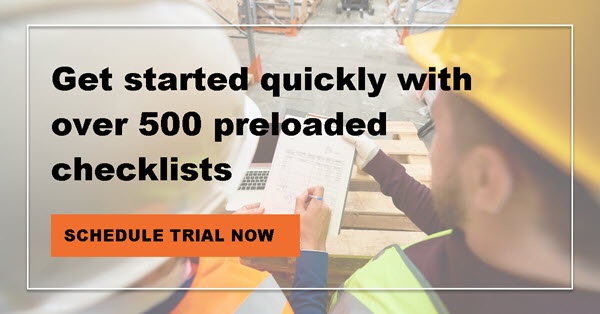
Related Articles
Four effective measures taken by skilled contractors to prevent construction defect litigation.
The threat of construction defect litigation looms large for every contractor. It can severely impact a contractor's...
Case Study: How a construction company reduced subcontractor errors
A construction company building office complexes in the Midwestern United States had a crippling problem. In their words, “the...
4 Tips for Reining in Excessive Construction Warranty Claims
Excessive warranty issues can swiftly turn a profitable construction project into a financial burden. Beyond the direct costs,...
Privacy Policy
© 2019 FTQ360 Inc

Prior to carrying out your site analysis site visit you will have undertaken your site analysis desktop study . It is important you go to site prepared, so make sure you check out that blog post before you continue with this one.
The desktop study will establish some of the specific information you will be looking for, or what equipment you may need to take with you. With any site visit it is key that you take everything you need, and get as much information as you can – because often the site can be located a good distance from you, and it costs both time and money if you keep on having to take trips back to site because you were underprepared for your first visit.
You can download our Site Visit Site Analysis Checklist by clicking the button below. It makes your site visit a whole lot easier!
There are many things you will be looking for when you carry out your site visit, and in order to record some of this information you will need to take a few items with you that will make things a bit easier.
What to take with you on your Site Visit

- Site map or plan – preferably a couple of copies so you can scribble observations on them or mark out specific features etc.
- Camera – essential. Make sure you take pictures of everything. Also, make sure you get some shots of the site from a distance so you can use these in your final images, cgi’s and so on. Also take pictures of what is opposite the site, so you can use these as reflections in windows of your design. It is so frustrating when you go to the trouble of visiting a site and come back wishing you had taken more pictures. It is a good idea to take some pictures of relevant materials in and around the site.
- Smart phone. If you have any apps that assist with taking panoramic pictures, take a few of these too. You can do some interesting stuff when you get to later design stages if you have a few panoramics to play with.
- Note book. Really important to be able to jot down any observations.
- Tape measure. Some sites may be close to hazards or situations where you will need to measure the proximity. If you have one, a disto, or laser measure could also come in handy, but not essential. I use this disto .
- Good weather! If you have a choice of when to visit the site try to pick a day when there is a bit of blue sky around. It will look better for your site photos, particularly if you are planning on using them in future presentations. And, let’s be honest, no one likes to do a site visit in the rain!
In the following video I run through all of the main points to look for when carrying out a site analysis site visit. Be sure to check it out.
Let’s get this site analysis site visit started
Before you head to site, if you are travelling alone, make sure someone knows where you are going, and what time you expect to be back. Keep that person updated.
On arrival to site, make sure you check in with the relevant person if necessary. The site could be occupied or un-occupied so make sure any owners, managers etc are aware that you have arrived and that you will be studying the site and taking photographs.
I would start by having a quick walk around the site to familiarise yourself with it generally. Take notes on what you observe, how you feel about the site, important information that you may have established from your desktop study that needs to be identified.
Next go round the site taking photographs of everything. You can never take too many photos.
After this start taking notes of any observations and scribbling down annotations on your plans. Anything is relevant, its better to write down too much than not enough.
Take your time to really get to know the site. If possible spend a bit of time there so that you can absorb the surrounding environment as well.
What to look out for
Site and surroundings.
- Site location details (road names, address, major landmarks etc)
- Current context – existing buildings, car parking, roads.
- Access to site – vehicle access, pedestrian access etc

Download our site analysis symbols for photoshop!

Check out our Desktop Study Guide – what you need to do before your site visit.

Other recent posts…

Form Follows Function
Introduction ‘Form follows Function’ is a popular architectural principle that was first introduced in 1896 by American architect Louis H. Sullivan (1856–1924) in his essay ‘The Tall Office Building Artistically Considered’. It was actually shortened from the...

Permitted Development Rights for House Extensions
Introduction to Permitted Development Rights When extending a house in the UK, understanding Permitted Development rights is essential. These rights allow certain building works and changes to be carried out without the need for a full planning application,...

Detail Library – New Details March 2024
New Details This month we are excited to share another set of details that have been requested regularly by our members. This set consists of external wall insulation details. In this set we explore a solid blockwork wall with 190mm mineral wool insulation and a...
Wow, what a useful article. There are so many things to take into consideration when doing a site visit and having them listed like this (with a checklist!) is very helpful. Thanks for a great post!
Thank you Ken 🙂
Hi Emma, thank you for your well done and insightful posts. I am not sure about the UK, but for anyone in the US I would be sure to go through the local zoning ordinances and, if your client is okay with it, reach out to the local planner. This is probably part of the desktop study, but if there are any overlay zones (e.g. historic, medical use) they should be in mind when visiting the site as well. Also, we would consider any evidence that might warrant an environmental assessment.
I appreciate your posts!
Superb informations that I found
am a retired Urban and Tourism Planner but still active in mentoring young planners, your post was really helpful and would recommend it to my students . thanks for a great job
Thank you 🙂
Submit a Comment Cancel reply
Your email address will not be published. Required fields are marked *
Submit Comment
This site uses Akismet to reduce spam. Learn how your comment data is processed .
This website uses cookies to improve your experience. We'll assume you're ok with this, but you can opt-out if you wish. Read More
Use and edit template for free
Construction site visit report template and example: better than pdf, word & excel.
Start with a free 30-day trial. No credit card required.
Ensure you're properly documenting your construction site visits to review the conditions of the site, status of the project and team performance so your project is progressing on time, on scope and you're meeting your compliance requirements.
Use this standardised construction site visit report template to run well-documented reports digitally from on site via mobile or tablet with much more functionality than using Word or Excel to run site visits.
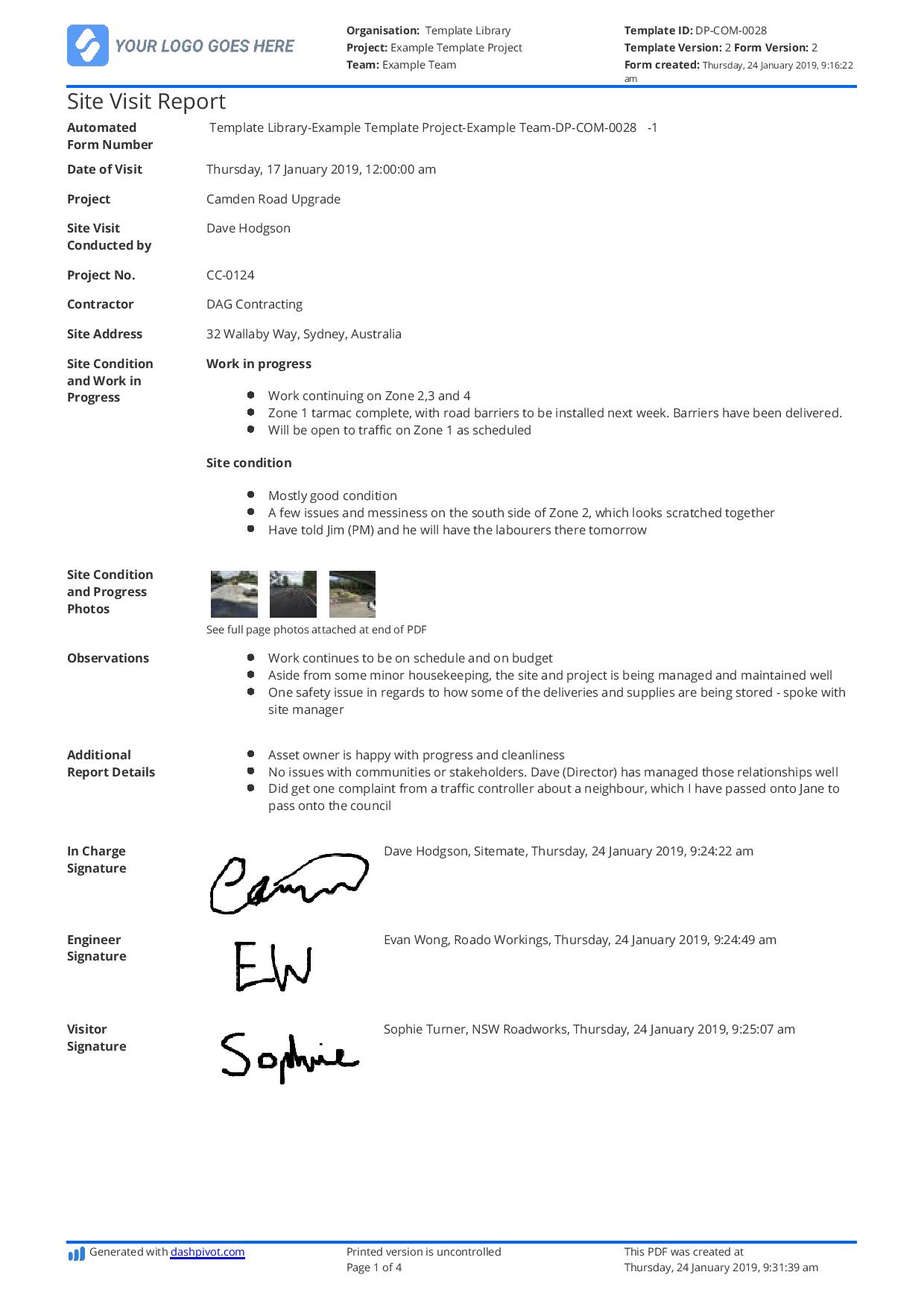
Trusted by over 250,000 people from built-world companies of all sizes
~200 employees
~20 employees
~25,000 employees
~40 employees
~10,000 employees
~1,500 employees
~35,000 employees
How does this digital construction site visit report template compare to using a static PDF, Excel or Word doc?
Preview this site visit report template below. Try the interactive demo.
Use this construction site visit report template for free.
This site visit report template was generated with dashpivot.
Digitise your construction site visit reports to make it easier to run, update or access them on site to build better processes rather than using Excel Sheets or a Word Doc.
- Record new site visits or access and update existing site visit reports via mobile or tablet, then sync back up to the office as soon as they're submitted.
- Share site visit reports as perfectly formatted PDF or CSV with brand colours and company logo.
- Attach photos or videos of the site condition and use photo markup to highlight defects, hazards or work completed.
- Get digital signoff from Supervisors, Engineers, Visitors and more with eSignatures.
- Customise the digital template with any fields you need to capture the site condition or project progress.
Other popular templates you can use and customise for free

Construction Log Book template
Make your log book easier to complete, share and organise with this digital log book template.
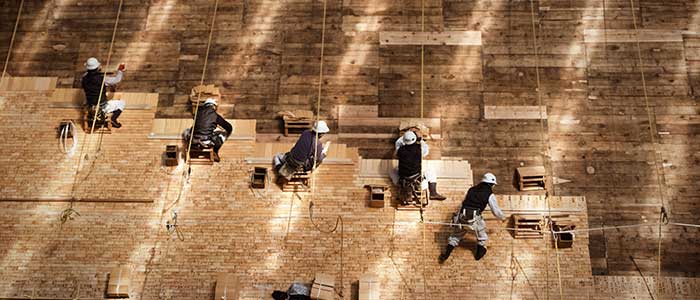
Construction Work Order template
This construction work order template can be used and adapted for any work order, to make your communications more efficient and more reliable.
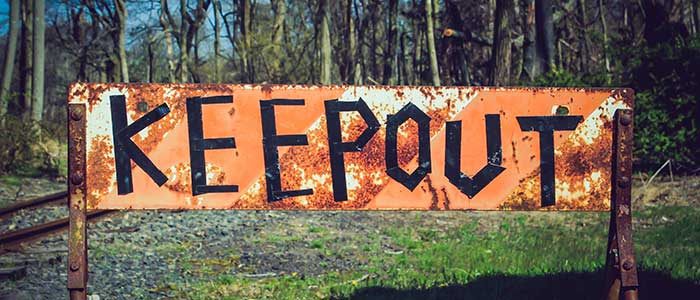
Construction Stop Work Order template
This construction stop work order template ensures your stop work orders never get missed or ignored.
Construction site visit reports are crucial for visibility on site condition and project progress
A well-detailed construction site visit report is essential for ensuring project success and safety. It gives stakeholders a comprehensive overview of site conditions, progress, and compliance, ensuring informed decision-making on if the project or contract need changes.
By identifying hazards, recommending controls, and serving as a digital audit trail, site visit reports play a vital role in risk management, promoting transparency, accountability, and quality in the construction process.
Whether your site visit report is in Word, Excel or you're using this digital contruction site visit report template, you need to include:
- Date of Visit
- Site Details
- Site Condition & Work in Progress
- Photos of site and hazards
- Issues found and how to resolve
Share your construction site report as a PDF so external stakeholders have easy access to it when they need to review it.
Sitemate builds best-in-class software tools for built world companies.
The Complete Construction Site Inspection Checklist
Posted on October 7, 2019 |
Construction is a high risk and hazard industry that encompasses a broad spectrum of activities, including repair, remodeling, and commercial construction. Construction workers perform dangerous tasks, and they must be aware of electrocution, unguarded machinery, falling off rooftops, getting struck by heavy equipment, etc. Inspections provide certainty that everything in the construction project is working as it should, so we assembled a complete construction site inspection checklist so when the Inspectors come around, your job site passes with flying colors the first time around.
Table of Contents
Construction Site Inspection Checklist Article highlights:
— OSHA compliance evolves every year and companies must stay current
— Personal protection types and tips
— Surrounding Environments are ever-changing and preventative safety checks will save lives
— Equipment & Machinery – maintenance and safety checklists to keep employees safe and equipment costs low
A construction site inspection checklist is necessary for the preparation of a construction project to help avoid injuries, illnesses, and fatalities. Construction checklists are essential in the planning phase because they list processes and procedures that are mandatory standards. Inspections can put a hold on production if there is a need for reinspection, so Supervisors can use our checklist for efficiency and safety for all projects.
The checklist below is a resource of safety procedures that any company can follow, but always reconfirm your list before starting your next project:
What is OSHA?
OSHA , (Occupational Safety and Health Administration) is an organization under the United States Department of Labor, and it offers an extensive checklist for construction site safety in order to prevent potential hazards. According to OSHA, in 2017, one in five worker deaths last year occurred on construction developments. This organization identified the four most common reasons for construction fatalities to include electrical hazards, fall hazards, struck-by hazards, and caught-in or -between hazards. In this industry, there are formal inspections of job sites to ensure that companies are following OSHA standards.
OSHA checklists include:
— Crane safety — Electrical safety — Elevated surfaces — Eye and face protection — Floor and wall opening — Foot protection — Forklifts — Hand protection — Head protection — Hazard communication — Scaffolding
Personal Protection
As a Supervisor, it is important to supply and enforce that the team workers are wearing the proper protection on job sites. Appropriate attire and personal protection procedures and equipment are crucial in preventing hazards on the job site.
Eye Protection:
Safety glasses, goggles, or shields should be worn on all construction sites. Eye protection should be worn during all work production times for safety. When working with energized electrical systems, one should wear safety goggles or a face shield to avoid electrical hazards. One should also use eye protection when doing the following activities:
–welding
–cutting
–grinding
–nailing
–using chemicals/concrete
–around flying particles.
Head Protection:
In any instance where there is potential for objects to fall from above, workers must wear hard hats. Additionally, it is imperative to wear one on-site if there is accidental contact with electricity or one hits their head on a fixed object. Team members should routinely check the condition of hard hats and replace them if there is/are:
–dents or cracks –a heavy blow or electrical shock.
Foot Protection:
Every worker should be wearing safety-toed footwear on any site to prevent crushed toes if something falls on your feet or stubbing toes on heavy objects. Also, proper foot protection should be slip and puncture resistant. Before you go purchase foot protection, make sure you consult with your superior as there many different types of construction footwear that come with pros and cons.
Respiratory Protection:
In any field of construction, workers must wear the appropriate and task-specific P.P.E (Personal Protective Equipment) because on worksites there are a variety of fumes, industrial sprays, dust, and other respiratory hazards.
You will need to replace a new respirator if there are:
–cracks, tears or holes in the filter, –elasticity in straps, and deterioration of metal nose clips.
Additionally, check for loose-fitting lenses, excessive dirt, or broken/malfunctioning buckles so you can order new equipment or get them cleaned. To learn more about respiratory protection visit the OSHA website .
Surroundings
Scaffolding:
This step in the construction phase is extremely hazardous because scaffolding issues are a common cause of construction accidents. Bureau of Labor Statistics (BLS) stated that scaffolding results in “4,500 injuries and over 60 deaths each year and that almost 30 percent of all workplace deaths from falls involve scaffolding or ladders.”
Scaffold Problem Prevention :
–fully planked, on stable land –not moved within 10 feet of power lines –not altered –no added material for height –ideal weather conditions
Examining the scaffolding on the job site is something to check regularly; falls relate to lack and improper installation of guardrails and insufficient training.
Electrical safety:
Electrical workers can be at risk of awful burns, harmful shocks, and fatal electrocutions. OSHA stated that electrocution has the third-highest counted fatalities. To prevent the high numbers in electric shocks, teams should review:
–all electrical equipment and tools are maintained and regularly checked for defects –Any electrical cords, cables, and wires –electrical tools are grounded respectively unless they are double insulated. –Attire and prompt protocols when in contact with electrical energy. –Additionally, for any electrical equipment that is faulty or broken, they must be replaced promptly.
Elevated Surfaces:
Falls from construction sites are most common , reports the DCD. Almost one-third of all construction compensation claims are from elevated surface mishaps. Companies should double-check the following as it relates to elevated surfaces:
–signs are posted to show elevated surface capacity. –taller than 48 inches must have standardized guardrails –have handrails alongside the entry and exit –Harnesses are attached to secure anchorage
Trained operators should inspect Construction equipment every time they are transported and arrive to the job site. They should know what to look and listen for adequately working equipment. Equipment maintenance is a preventative measure for injuries on job sites and essential to safe operations. Common equipment and machinery are ladders, bulldozers, excavators, etc.
Operators should monitor:
–Fluid or hydraulic leaks –Loose belts, bolts, screws, fasteners –Faulty breaks and tire pressure –Broken or cracked windows/glass –Seatbelts –Back up alarms
Additionally, if a piece of equipment is inspected and identified as faulty, the machine should be sidelined for repair or replacement.
Self-Inspection is significant in the construction process because it identifies what needs to be addressed for improvement. When followed, hazards and conflicts during construction builds can be prevented. The number of employee injuries will significantly diminish if companies take the time and dedication to thoroughly self-inspect (and continually monitor) their equipment and job sites to identify potential hazards and problems.
Risk mitigation is the name of the game.
Most Recent Articles
- Request free trial
- Product Permit Management Incident Management Audit Management
- Why Safetymint
- Support Resources Help Docs
- About About Us Partners Careers Blog
- Request a Demo
Construction HSE Inspection Checklist
Promote a culture of safety and compliance on your construction site with our comprehensive Construction HSE Inspection Checklist. This free PDF template is designed to help you systematically assess Health, Safety, and Environmental (HSE) practices and identify potential hazards, ensuring a secure working environment for all construction personnel.

Digitize this Checklist on Safetymint
- Create unlimited, customized checklists
- Add Actions, with automated reminders
- Works seamlessly with or without internet
- Access via web browsers, mobile or tablets
Take a free trial

What is a Construction HSE Inspection Checklist?
A Construction HSE Inspection Checklist is a systematic tool used to conduct safety inspections at construction sites. It includes a series of checkpoints designed to evaluate compliance with HSE regulations and best practices. Regular inspections are vital to prevent accidents, reduce injuries, and uphold environmental stewardship.
Key Areas to Inspect in Construction HSE:
- Personal Protective Equipment (PPE): Ensure workers are equipped with appropriate PPE , including hard hats, gloves, safety glasses, and high-visibility vests.
- Fall Protection: Inspect the availability and proper use of harnesses, guardrails, and safety nets to prevent falls from heights.
- Scaffolding and Ladders: Check the stability and proper assembly of scaffolding and ladders used on the construction site.
- Electrical Safety: Assess electrical wiring, outlets, and equipment to prevent electrical hazards.
- Excavation Safety: Ensure that excavations have proper shoring, sloping, or shielding to prevent collapse.
- Heavy Equipment Operation: Verify that operators are trained and qualified to operate heavy machinery safely.
- Hazardous Materials Handling: Observe the proper storage, handling, and disposal of hazardous materials on-site.
- Emergency Preparedness: Assess the availability and awareness of emergency response plans and equipment.
Common Construction HSE Hazards:
Construction sites can present various hazards, including:
- Falls from Heights: Inadequate fall protection can lead to severe injuries or fatalities.
- Electrical Accidents: Contact with live wires or faulty electrical equipment can cause electrocution.
- Struck-by Incidents: Workers may be struck by falling objects or moving construction equipment.
- Trenching and Excavation Hazards: Collapses can occur in improperly supported excavations.
- Hazardous Materials Exposure: Mishandling or improper storage of hazardous materials can lead to health risks.
Construction HSE Inspection Best Practices:
- Regular Inspections: Conduct frequent HSE inspections to identify and address potential risks promptly.
- Training and Education: Provide comprehensive HSE training to all construction personnel.
- Incident Reporting: Encourage a culture of reporting near misses and incidents for continuous improvement.
- Documentation and Recordkeeping: Maintain detailed records of inspections, incidents, and corrective actions taken.
- Collaboration: Involve workers and supervisors in the inspection process to enhance safety ownership.
Safetymint for your Construction HSE Inspection:
Streamline your Construction HSE inspections with Safetymint, our advanced construction safety software . Safetymint revolutionizes the inspection workflow, ensuring accuracy and efficiency in identifying potential hazards. Our cloud-based platform guarantees data security and stability, making it the ideal solution for all your inspection needs. Try Safetymint HSE software free for 14 days and experience how you can elevate your Construction HSE practices.
Sign up for the 14-day free trial
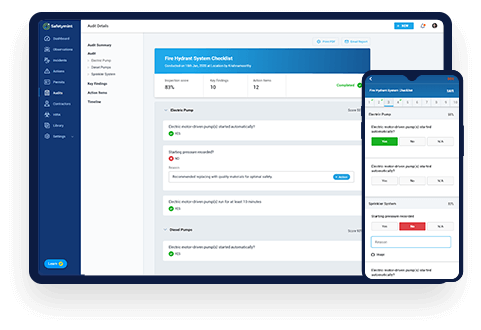
Disclaimer: The Construction HSE Inspection Checklist offered by Safetymint is intended for general informational purposes only. Every construction site is unique, and specific inspection requirements may vary based on individual project needs, industry regulations, and HSE guidelines. Users of this template are encouraged to review and customize the checklist to align with their specific construction site environment, potential hazards, and safety protocols.
Related Checklists

GMP Audit Checklist

Pre-Startup Safety Review (PSSR) Checklist
Construction punch list checklist, project closeout checklist.
Daily Report Checklist

Safety Audit Checklist
Lumiform / Checklists / Site Inspection Checklist
Site Inspection Checklist

What Is a Site Inspection Checklist?
A site inspection is intended to check the quality and effectiveness of occupational safety and health protection measures. The purpose of the inspection is to discover deficiencies and to identify means of eliminating them.
Site inspections are an integral part of occupational health and safety at work and are part of the employer’s obligations. Ideally, they are discussed in advance in an occupational safety committee and prepared in detail . A site inspection can also be arranged after a specific event (e.g. an accident) or on a specific topic such as hygiene or fire protection.
In companies, inspections are also carried out as part of the risk assessment to assess the physical risk to employees at the workplace . During such site inspection with checklist, not only are deficiencies recorded, but all possible risk and stress factors are systematically recorded. Checklists are particularly helpful in this type of inspection because they facilitate the extensive documentation.
This article informs about the following points:
1. The cycle of a site inspection
2. The contents of the site inspection checklist
3. A digital tool for the site inspection
The Cycle of a Site Inspection With Checklist
The Employee Safety Act stipulates that plant inspections must be carried out at regular intervals. The “regularity” results from the hazard potential at the workplace and from the dynamics with which working conditions change. In practice, however, companies must specify the cycle in concrete terms. The frequency can be determined with the help of the risk assessment , which also forms the basis for the inspection. The checklist items can be derived from it, as it documents the hazard factors of the workplaces and processes as well as the protective measures defined.
The Contents of the Site Inspection Checklist
A checklist for the site inspection varies in scope and content depending on the type of company and workplace. However, there are some focal points that can be found in every checklist template for a site inspection.
Work Safety and Ergonomics
The main focus of each site inspection is to check the specified protective measures and whether the legal regulations are being observed. Accordingly, deficiencies in work safety and physical hazards are searched for. This also includes checking whether employees are using protective equipment and implementing instructions for conduct. The indoor climate, lighting and noise levels are also checked.
Observation and Employee Participation
Some hazard factors can only be identified by observing work processes. To do this, you can conduct a site walkthrough with a checklist to look for objects, activities, or obstructions that raise safety concerns. It is important to involve and question the employees in this part of the site inspection. In addition, hints and complaints can be recorded.
Psychic Hazards
Threat factors that affect the physical health of a patient can only be recorded to a limited extent during a site inspection. Hectic and stressful environmental conditions can be included in the checklist. Anything else would have to be determined through an anonymous survey of the employees.
The deficiencies found during a site inspection are recorded in the checklist. The following information should be included:
- Type of Deficiency
- Proposed measure(s)
- Responsible for the implementation
- Deadlines for implementation
Recommended Pages
- Risk management software for anticipating and adressing safety risks
A Digital Tool for the Site Inspection Checklist
Plan inspections are an important part of occupational health and safety. They should therefore be carried out carefully and with the best possible equipment. For example, digital technologies make it easier for safety officers to inspect, document and evaluate.
With Lumiform’s mobile app, any type of quality and safety inspection can be easily performed using a tablet or smartphone – online or offline. The desktop software is used to create checklists and evaluate the data collected on site. This significantly reduces the risk of quality losses, industrial accidents, documentation errors and damage to reputation.
Constantly increasing legal requirements for the documentation of processes can easily be met with the digital application. Every user is guided by the system through all documentation processes, which is almost error-free. If the hazard potential at the workplace increases, the checklist for site inspections can be easily adapted using the flexible form module .
Further advantages of a site inspection with digital checklist:
- Faster reporting through automatically generated reports – the saves the complete follow-up work .
- Comprehensive analyses save time and uncover dangers in the company more quickly in order to continuously improve protective measures.
- Depending on the application, operational inspections are carried out about 30%-50% faster than with strong equipment.
Other Articles
- Hotel Checklists
- Pre-shipment Inspection Checklist
- Construction Checklist
- Health and Safety Policy Checklist For Work

Max is a Content Writer at Lumiform originally from New York, NY. Before Lumiform, he worked at the fintech company, writing on a range of fintech-related topics. He has experience writing blogs, CRM communication, guides, and landing pages. In addition to a love of content writing, Max is passionate about standup comedy and cooking.
Use this site inspection template for an inspection of your site and identify hazards.
Check for hazards and flaws with a building safety checklist template
Use this template for an inspection of your building site. This checklist includes many features just as crane permits, vehicles, and lighting. You can report issues and make pictures of different details.
Monitor work with this contruction site inspection report template
Use this template for an inspection of your site and then automatically generate a report for your superiors.
Your contact for all questions concerning Site Inspection Checklist
You have questions or would like to schedule a personal demo? We are happy to help you!

Form Template Construction Site Visit Checklist

- Instant access
- Online editor
- Your business name
- Edit for 30 days
- PDF download
- 655+ documents
- Individual plans
- Your business logo
- Unlimited edits
- Fully branded
Document Description
Create your document in minutes with this ready to use Construction Site Visit Checklist Form template. Use the quick and easy editor to add your details, make changes, and download a completed document branded with your business name.
Use this Construction Site Visit Checklist Form to carry out a quick health and safety check on site and ensure the site is in good order.
Site health and safety checks should be done regularly to ensure health and safety standards don't slip during a project. This Construction Site Visit Checklist Form can be used in addition to more thorough site inspections such as those carried out with our Construction Site Inspection Checklist.
Health and safety law requires contractors to plan, manage and monitor your construction work so it is done safely and without risks to health. Regular monitoring will keep health and safety awareness high on site, and performing a quick check during site visits will help alert you to any problems that may be developing.
You can use the Construction Site Visit Checklist Form template as it is, in your business, and we will add your business name at the top of each page. The template is ready for you to fill in and complete, you can edit it as much as you need to produce a site specific health and safety document for your projects or workplace.
This 2 page document includes:
- Site Appearance
- Security and Traffic
- Site Rules and Work Activities
- Tools, Equipment and Plant
- Management Procedures
- Observations
- Acknowledgement
How do I edit this document?
This Construction Site Visit Checklist Form template can be edited online within your browser. Editing is quick and simple, but if you need more time, there's no hurry to finish your document today - you get 30 days use of the template and online editor to create your document.
When you complete your order, the document can be found in your account under 'Documents'. You can edit the document online from your HASpod account.
How do I download this document?
Download in PDF format for maximum compatibility across devices - no special software required. Once downloaded you can save, print and use your Construction Site Visit Checklist Form document within your business for as long as you need it.
After making your edits, click the download button to get your PDF - we will add your business name in the header for you.
Get unlimited access to every document on the Documents Plan .
Moscow major projects
Since launching modern Russia’s largest construction program in 2011, Moscow has more than doubled its territory. To catalyze the full potential of this rapidly-growing metropolitan area of 19.5 million people, the City of Moscow’s government pays significant attention to infrastructure as one of the key pillars of urban development—with a current focus on projects that create livable and comfortable urban spaces for both citizens and tourists.
Following its first five years of projects, Moscow was given special recognition for “demonstrating outstanding strategic commitment and ambition” by the International Association of Public Transport (UITP). That period saw 50 million square meters of real estate developed, 370 social infrastructure objects built, and the metro expanded by 30 percent—including 101 kilometers of metro lines and 55 new stations. Innovative finance solutions, necessitated by the city government’s debt-free approach to development, enabled all this whilst maintaining a budget surplus and remaining a net donor region within Russia.
On 30-31 May 2018, the City of Moscow and Mosinzhproekt—a large Russian engineering, construction and project management company—hosted an Innovation Site Visit to showcase Moscow’s major projects to the Global Infrastructure Initiative (GII) community. Through roundtable discussions and site visits with project executives, participants explored where innovation and technology have enabled the step-changes that have allowed Moscow to deliver major projects on a short timeline—and how to apply these lessons to other cities and major projects.
The following insights emerged during GII’s Innovation Site Visit in Moscow:
- Establish a structure for citizen involvement. Major urban infrastructure projects are an extremely visible expenditure of taxpayer funds while also often being large disruptors of daily life. A foundation of citizen support is essential for success and requires a thoughtful engagement program. In Moscow, citizens are encouraged to participate in the planning process by steering major initiatives through the “Active Citizen” application—a portal for online referendums on topics appropriate for democratic decision-making. To date, almost 2 million citizens have cast more than 90 million votes on over 3,000 issues through the platform. The purpose of this structure is to increase the opportunity for citizen engagement and involvement with their city’s major investments.
- Manage the disruption ‘cost’. Major urban projects cannot be delivered without disrupting daily life. While citizens can be enrolled to accept the disruption as a necessary investment for a better outcome, equal attention needs to be given to managing the disruption ‘cost’ as to managing real expenditures. For example, MyStreets, a project to upgrade and enhance Moscow’s urban environment through reconstruction of streets and building façades, was disruptive to many citizens and commuters. However, through staging and swift execution, the disruption was minimized and the intended lifestyle improvements were quickly delivered to Muscovites and tourists who traverse newly styled pedestrian streets every day.
- Invest in technology to optimize sequencing. Moscow’s cohesive vision for urban transformation has allowed early investments in technology to assist future delivery. One of the first projects completed was the centrally-controlled traffic management system which can monitor traffic conditions and urban movement through more than 2,000 traffic cameras and 160,000 CCTV cameras installed across the city. Data collected on current conditions, and knowledge of planned activities, allows real-time rerouting of traffic through the city’s dynamic signage. It also allowed identification and analysis of permanent traffic flow changes that could further ease disruptions like those created by the major construction projects.
Moscow traffic speed increased over 13% in 201.
- Maximize utility of brownfield sites. A key reason the Moscow Central Circle (MCC), a new light-rail system integrated into the Moscow Metro, was completed in a record four-year period was the repurposing of existing brownfield networks which allowed the installation of modern technology on existing rail transport routes. The MCC’s 31 new stations will revitalize formerly abandoned industrial areas when its next stage of development builds an expected 300,000+ square meters of hotels, 250,000+ square meters of retail, and 200,000+ square meters of offices. This will give districts with historically poor infrastructure access a chance to develop at the same pace as the rest of the city.
- Leverage PPPs to enhance basic services. To manage public cost and investment while delivering world-class infrastructure, municipalities need access to additional financing tools. Based on a structure that took an act of federal legislation, the MCC is an example of enhancing publicly developed foundations with private services. The tracks and land are owned by the Moscow Metro, with the rolling stock subcontracted to Russian Railways under a life cycle contract with a guaranteed buyback. The innovation is that Moscow Metro is licensing the development rights of its individual stations to private investors. Though all stations will exist under the same covenants, individual investors will assume their station’s construction cost and operational risk and rewards.
- Create citizen-centric spaces. In addition to serving as open spaces, today’s city residents expect their parks to provide for entertainment and consumer services too. Many modern parks offer architectural features, charismatic vistas, and social, educational, and artistic spaces for all ages. When Zaryadye Park, an area of prime real estate next to the Kremlin was converted to parkland, an international contest resulted in 10 hectares being densely designed for this multi-function purpose. The outcome was two concert venues, restaurants, a parking garage, an entertainment complex, and a biological education center, all neatly camouflaged into a natural landscape that represents Russia’s ecological diversity.
- Innovate where needed but not excessively. Moscow’s planners and builders did not shy away from technological innovation. The MCC used weldless joint rails to create a smoother and quieter system that is easier on riders and less disruptive to residents living near the railway tracks. The retrofit designs for Luzhniki Stadium were fully modeled in building information management (BIM)—a step which identified more than 100,000 conflict points before they could escalate into project delays. However, the project teams were also careful not to force innovation where it could create unnecessary risk and complications. Instead, they delivered the massive project portfolio by tactically melding innovations with highly-proficient execution of well-known and proven methods.
Related Articles
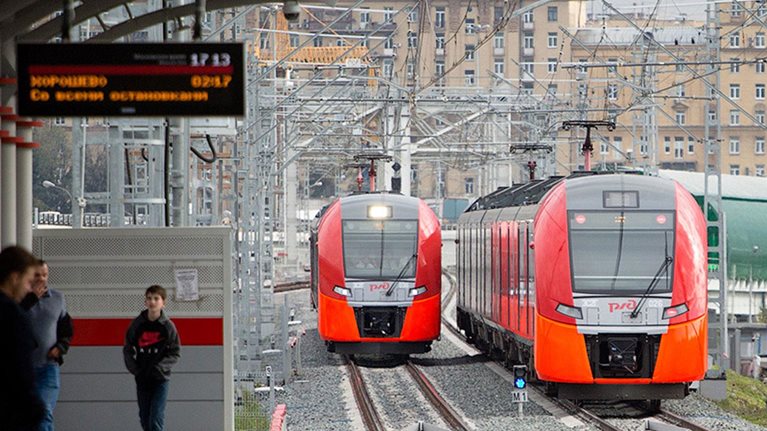
Building smart transport in Moscow
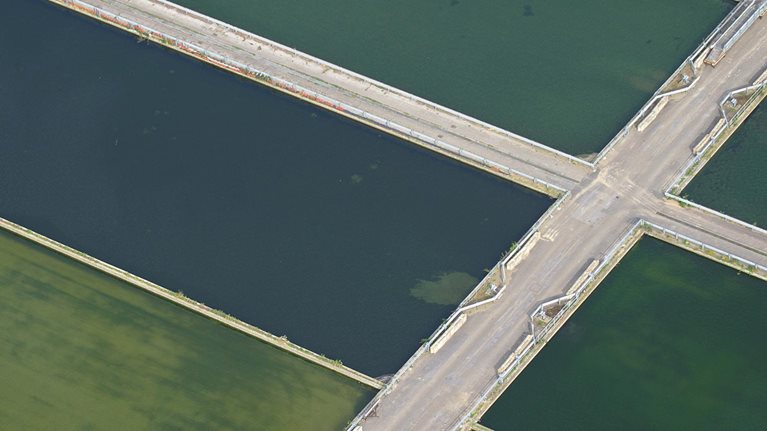
Making the consumer case for major infrastructure

Learning from experience: How hosting the Olympics can leave a positive legacy

- OUR BUSINESS UNITS
- MERTON ENGINEERING
- MERTON CONSTRUCTION
- MERTON REAL ESTATE
- MERTON INVESTMENTS
- MERTON RESEARCH AND DEVELOPMENT
- MERTON RETAIL
Merton Construction

Merton provides full scope of services for commercial, industrial, and public buildings with a firm commitment to safety and timely project completion – i.e. warehouses, shopping malls, hyper/supermarkets, hotels, residential buildings, hospitals, schools, industrial plants, retail complexes, showrooms.

IMAGES
COMMENTS
The Ultimate Construction Site Inspection Checklist: Ensuring Safety and Compliance. Sreemathy. November 7, 2023. Sreemathy. November 7, 2023. In construction, safety, quality and compliance are paramount. To ensure a successful construction project and the well-being of everyone involved, it's essential to conduct thorough site inspections.
A Construction Site Inspection Checklist is a systematic tool used to evaluate safety practices, regulatory compliance, and overall site conditions. It includes a series of checkpoints designed to ensure that the construction site meets safety standards, equipment is in proper working condition, and all workers are protected from potential hazards.
Construction phase to tackle problems; Start-up post-construction to ensure everything's running smoothly; To make the most of each site visit, follow my 6 engineering site visit checklist tips. I'll focus on design phase visits, but these takeaways apply to all stages. Also, enjoy some rad photos from a hydroelectric facility I helped ...
A Guide to Organising a Construction Site Visit; A Site Visit Workbook; Site Visit Arrangement Sheet (editable) Resource Descriptor: These resources provide a range of information, advice and guidance including a workbook, checklists, FAQ to support employers hosting a construction site visit and those who are intending to visit a construction ...
A Site Safety Inspection Checklist is a systematic tool used to evaluate the safety conditions of a workplace or construction site. It includes a series of checkpoints designed to assess potential hazards and identify safety gaps that may pose risks to personnel or property. Regular site safety inspections are vital for preventing accidents ...
Date. Number of workers present and type. Equipment and tools used. Materials. Bid items installed. Limits of the work done. Weather conditions, including daily high and low temperatures. This information is often captured using a work report or site inspection checklist. This checklist is an important part of the quality management process and ...
Introduction to Site Inspection Checklist: This site inspection checklist is geared toward the formal inspection of construction sites to provide the high standards set across the industry are being met. You can run this site inspection checklist every time you, as an inspector, visit a construction site to assess adherence to safety and operating standards.
A construction site safety inspection thoroughly examines the site to identify potential hazards, unsafe conditions or practices that might cause accidents or harm to workers or visitors. A construction site safety inspection assesses various aspects of the site, including work areas, equipment and machinery, fall protection systems, personal ...
Use this template now. This construction site inspection checklist template is free to use and customisable to suit any of your construction site inspection checklists across safety, quality, commercial, environmental and more. Construction site inspections are a critical component of managing every element of a construction project.
A site visit analysis is a comprehensive report that summarizes the findings of a physical inspection of a potential development site. It includes information on the site's physical characteristics, location, surrounding area, demographic information, environmental impact, zoning regulations, traffic flow, and recommendations for development.
6. Use a construction site visitor checklist. It's important to document all site visits. Record the personal information of each visitor in a visitor log, including the time and date of the visit and the visit's purpose. And, be sure to log both the time they arrived on and exited the jobsite. Using a construction site visitor checklist will ...
Checkpoints to document compliance with project-specific requirements. Recording of important measurements. Scores for quality, safety, and timeliness. Required pictures of inspected work. Signatures. From this starting point, you can tailor your checklist to both the job and the subcontractors doing the work.
Let's get this site analysis site visit started. Before you head to site, if you are travelling alone, make sure someone knows where you are going, and what time you expect to be back. Keep that person updated. On arrival to site, make sure you check in with the relevant person if necessary. The site could be occupied or un-occupied so make ...
This site visit report template was generated with Dashpivot. Digitise your construction site visit reports to make it easier to run, update or access them on site to build better processes rather than using Excel Sheets or a Word Doc. Record new site visits or access and update existing site visit reports via mobile or tablet, then sync back ...
Starter bars and joint details especially when the columns/walls are eccentric should also be checked during the site inspection as the continuity of columns from lower to the upper floors is important in the verticality. Figure 4.1 below shows the typical column joint connection details as your references. 5.
A construction site inspection checklist is necessary for the preparation of a construction project to help avoid injuries, illnesses, and fatalities. Construction checklists are essential in the planning phase because they list processes and procedures that are mandatory standards. Inspections can put a hold on production if there is a need ...
Construction HSE Inspection Checklist. Promote a culture of safety and compliance on your construction site with our comprehensive Construction HSE Inspection Checklist. This free PDF template is designed to help you systematically assess Health, Safety, and Environmental (HSE) practices and identify potential hazards, ensuring a secure working ...
Monitor work with this contruction site inspection report template. Sign up to edit template. Rated 5/5 stars on Capterra. Lumiform enables you to conduct digital inspections via app easier than ever before. Get a kickstart with one of our +12000 ready-made and free checklists. Try for free.
This Construction Site Visit Checklist Form can be used in addition to more thorough site inspections such as those carried out with our Construction Site Inspection Checklist. Health and safety law requires contractors to plan, manage and monitor your construction work so it is done safely and without risks to health. Regular monitoring will ...
Since launching modern Russia's largest construction program in 2011, Moscow has more than doubled its territory. To catalyze the full potential of this rapidly-growing metropolitan area of 19.5 million people, the City of Moscow's government pays significant attention to infrastructure as one of the key pillars of urban development—with a current focus on projects that create livable ...
The Definitive Site Inspection Stay Checklist for Meeting Planners. Part 2 Importance of Site Inspection. As the chief event planer, respective ultimate goal the to end the watch with a big. While technology has made virtual record a reality, she is clear that get is a peril gamble that equals turn the ice tip. Besides enabling you to making a ...
• Site Plan - See Site Plan Checklist on pages 7‐15 • Construction Drawings (Must be to scale) - Elevations - All rooms labeled as to use - Electrical schematic - If located in RS, R3, or RSA zoning district, must include EVSE infrastructure to accommodate future installation of EVSE per Sec. 27‐ 698(a)(4)
Merton Construction. Merton provides full scope of services for commercial, industrial, and public buildings with a firm commitment to safety and timely project completion - i.e. warehouses, shopping malls, hyper/supermarkets, hotels, residential buildings, hospitals, schools, industrial plants, retail complexes, showrooms. Merton International.
JSC Research Center of Construction is a scientific and engineering leader in the field of construction in Russia. Through more than 90 years, Center operates to secure efficiency, reliability and safety of construction and civil and industrial engineering works and the Russian building sector. JSC Research Center of Construction carries out R ...
If construction commences after June 3, 1977, but before January 18, 1991, then the construction will be deemed to be in compliance if it meets ANSI, the American National Standard Institute's Specifications for Making Buildings and Facilities Accessible to, and Usable by, the Physically Handicapped (ANSI A117.1-1961 (R1971)).